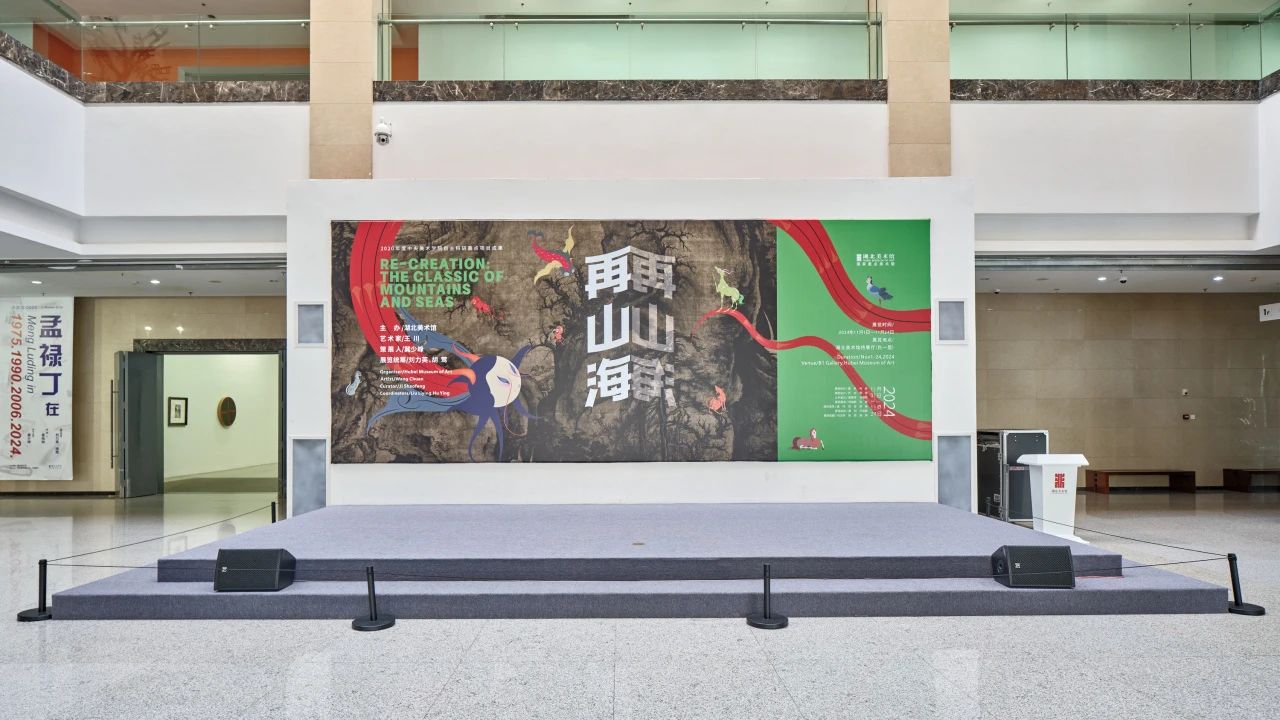 Exhibition View of “Re-creation: The Classic of Mountains and Seas”
Exhibition View of “Re-creation: The Classic of Mountains and Seas”
From November 1 through to November 24, 2024, Hubei Museum of Art presents “Re-creation: The Classic of Mountains and Seas” featuring the latest work by Wang Chuan. In the series “Mythical Beasts from Mountains and Seas”, the artist has liberated these mythical beasts of various shapes and colors that exude ancient mysterious atmosphere from classical texts. Through the intriguing combination of painting and photography, Wang has placed these imagined animals in the scenes of well-known Chinese classic ancient paintings, or scattered them in the life scenes that contemporary people feel so close to. In his ongoing project, the artist further “releases” these beasts into a scenic mountain forest in Hunan, endowing them with a completely new freedom and expanding the boundaries of art display, viewing and dissemination.
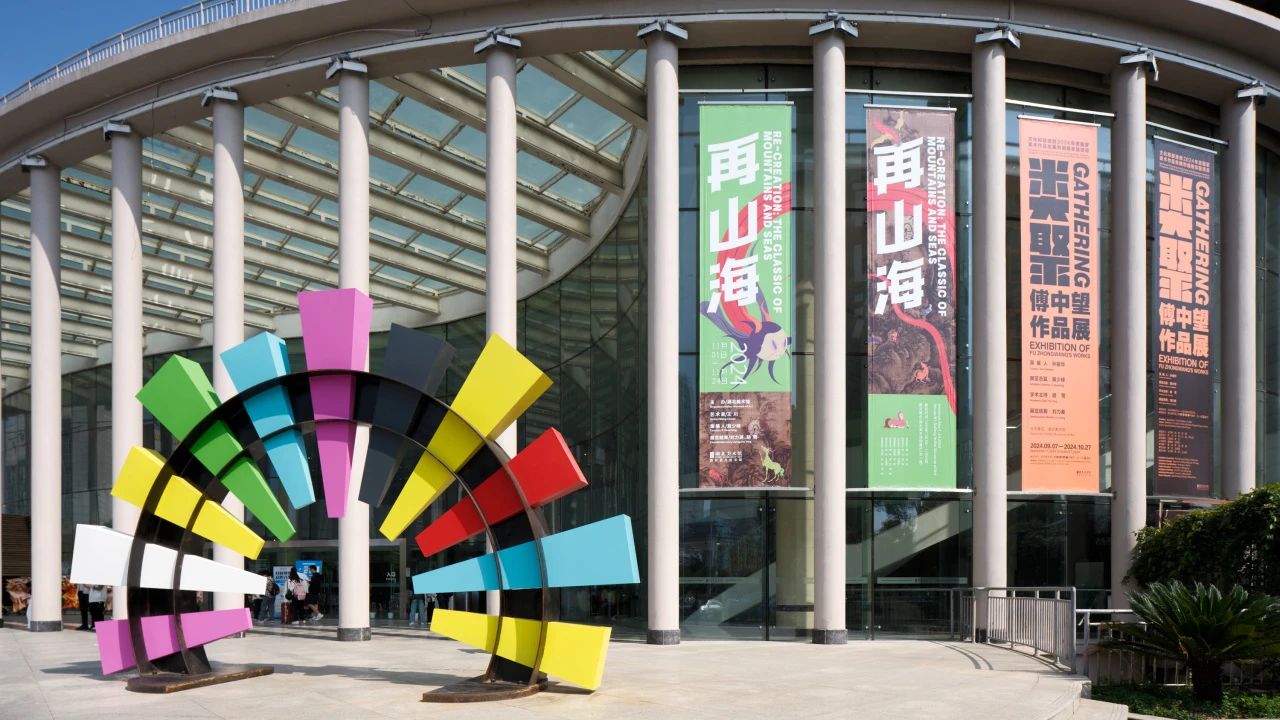
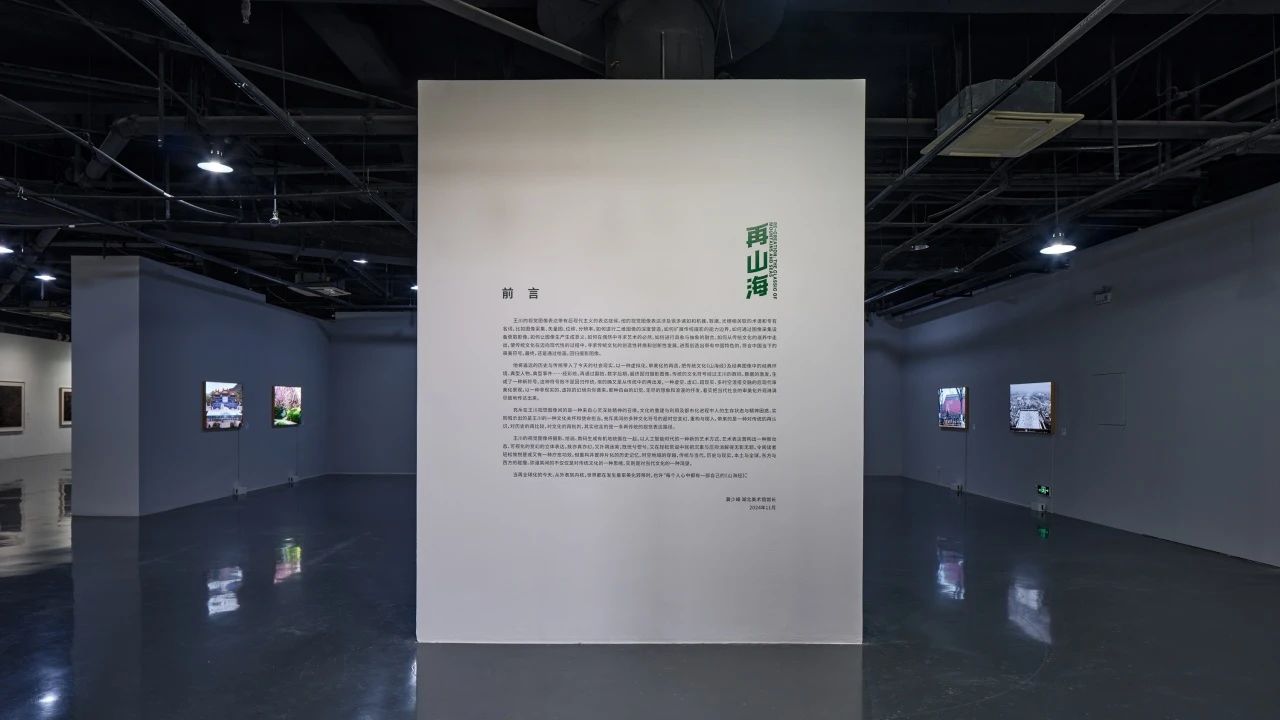 Exhibition View of “Re-creation: The Classic of Mountains and Seas”
Exhibition View of “Re-creation: The Classic of Mountains and Seas”
For artist Wang Chuan, the “Mythical Beasts from Mountains and Seas” series is probably a creative sequence that cannot be easily classified as painting, photography or contemporary art. This visual image world has been constructed to be an extending space for discussions on art media, materials, concepts, viewing and dissemination, and even the continuation and reconstruction of traditional culture. Ji Shaofeng, Director of Hubei Museum of Art, revealed in the preface that, Wang Chuan’s “visual plot in spirit” is about how to create a profound two-dimensional image, how to expand the capabilities of traditional photography, how to make image production generate meaning, how to integrate concrete and abstract expressions, how to seek creative transformation from the nourishment of traditional culture, and then create aesthetic symbols that conform to China’s current taste... Coinciding with the opening of the exhibition, CAFA ART INFO has interviewed Professor Wang Chuan, Doctoral Supervisor of the Photography Department of the Central Academy of Fine Arts. He talked about the origin, subject matter, materials, forms and so on in his creation of “Mythical Beasts from Mountains and Seas”, and shared his experience and thought on the contemporary visual transformation of traditional culture, as well as how he viewed and handled the complex relationship among photography, painting and contemporary art. His opinion on the viewing and dissemination of art was also included in this talk.
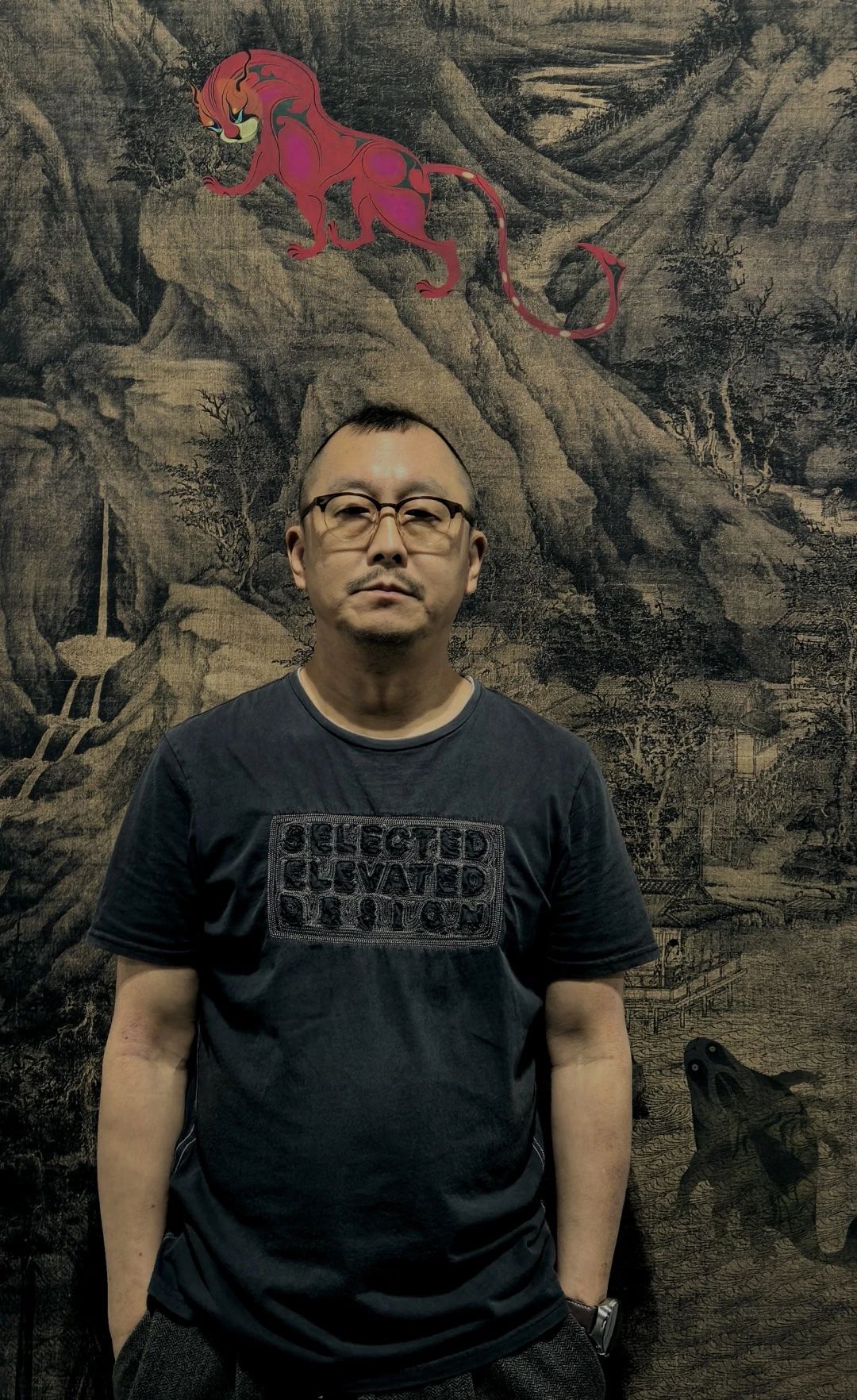
About the Artist
Wang Chuan is a professor and doctoral supervisor at the Central Academy of Fine Arts, and he also serves as the Director of the International Cooperation and Exchange Department of the Central Academy of Fine Arts. He graduated from the Book Art Department of the Central Academy of Arts and Crafts in 1990, and graduated from the “MAVA”Visual Arts (Photography) Postgraduate Class jointly organized by the Central Academy of Fine Arts and the Queensland College of Art in 2000. He received a master’s degree in Visual Arts (Photography) from Griffith University.
Interviewer: CAFA ART INFO
Interviewee: Wang Chuan
I. Why was “The Classic of Mountains and Seas” chosen?
CAFA ART INFO: Your latest solo exhibition at the Hubei Museum of Art displayed the “Mythical Beasts from Mountains and Seas” series. Many of your creations seem to be trying to explore the potential of traditional culture that can be transformed into contemporary photography. What made you interested in the image of the mythical beasts in “The Classic of Mountains and Seas” this time?
Wang Chuan: First of all, my choice of The Classic of Mountains and Seas is related to its particularity. It has a small amount of text and is relatively obscure. It was written over hundreds of years and is a process product. It can be said that everything in the Classic of Mountains and Seas is uncertain, but it also brings more freedom for creators to interpret. In the past, creations around the Classic of Mountains and Seas mostly continued the visual language of DreamWorks in Hollywood, and most of them portrayed mythical beasts as huge in size and with ferocious and fierce facial expressions. I hope to make a breakthrough on this Hollywood-style expression with the “Mythical Beasts from Mountains and Seas” series. Secondly, my choice is also closely related to my personal interest. I have been interested in ancient Chinese culture for a long time, and many core cultural elements of China originated before the Han Dynasty.
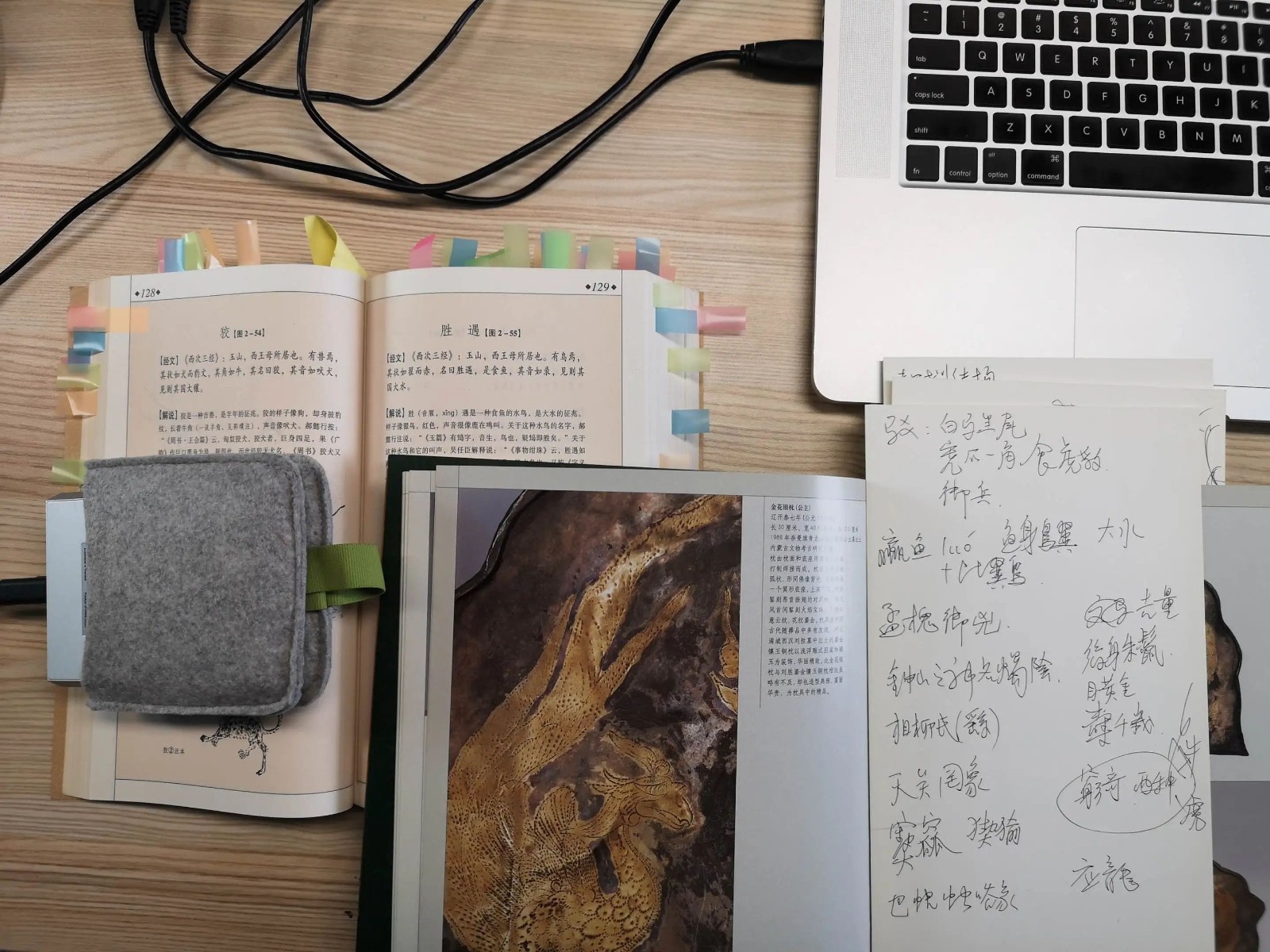
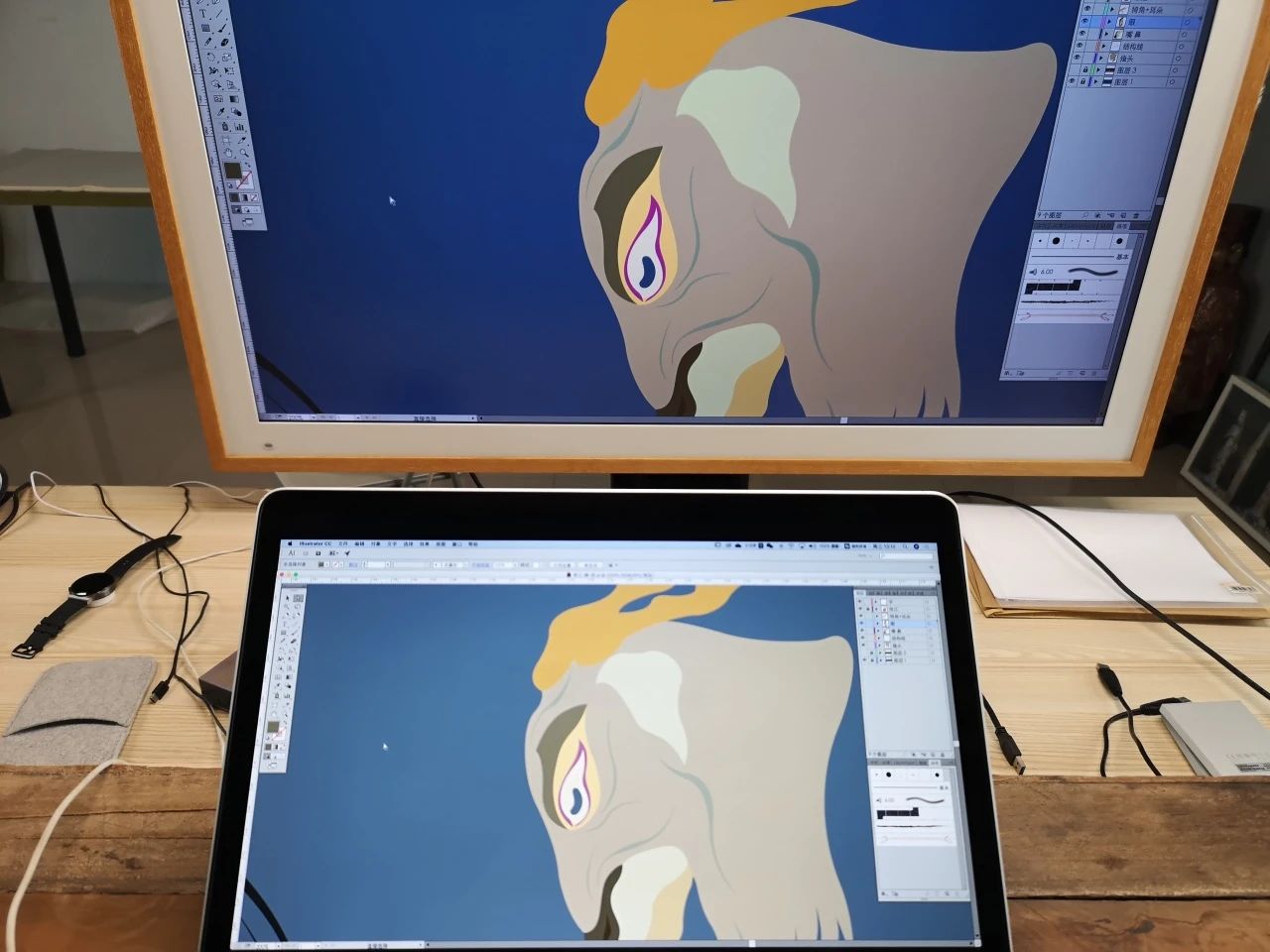
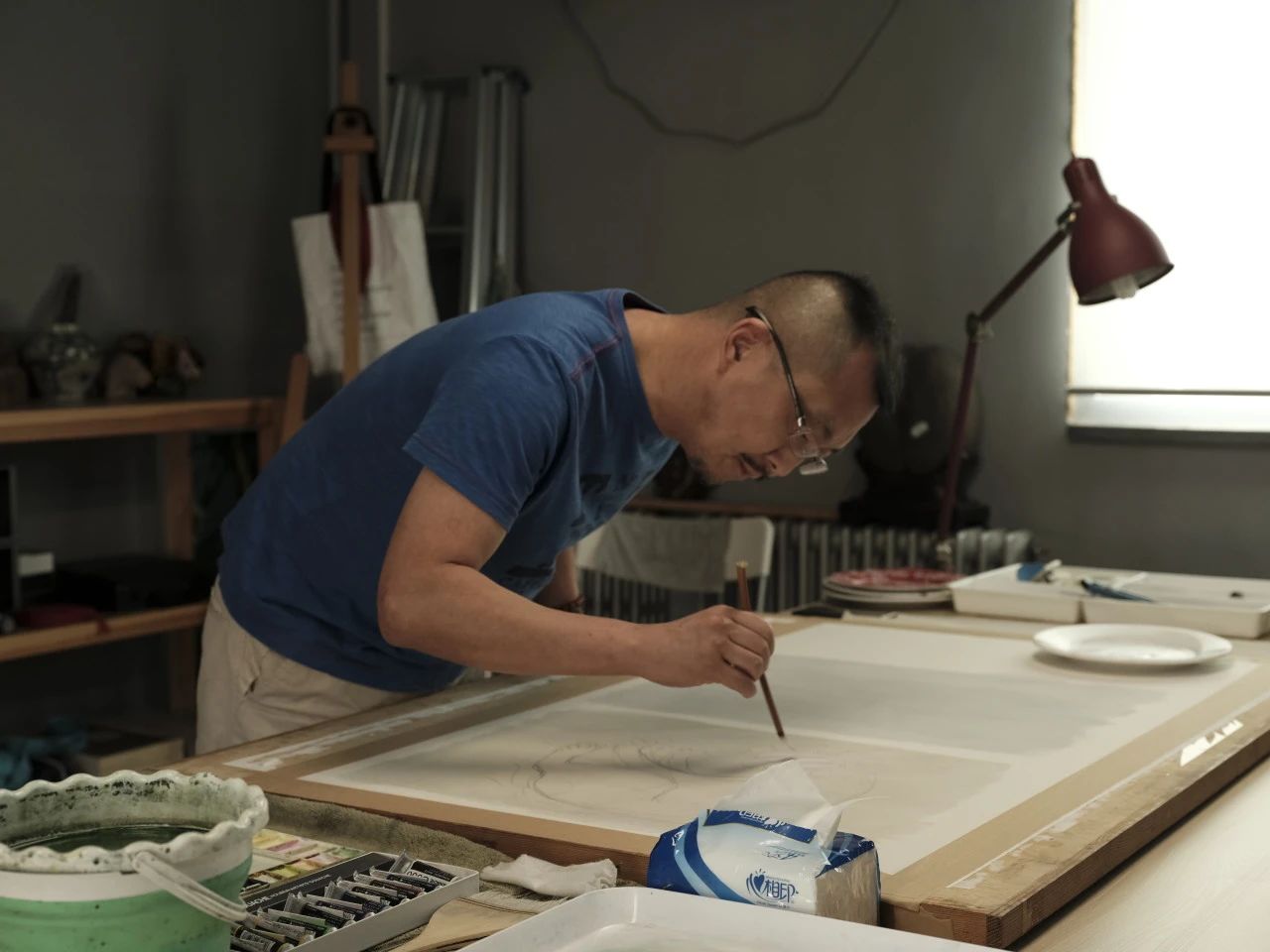
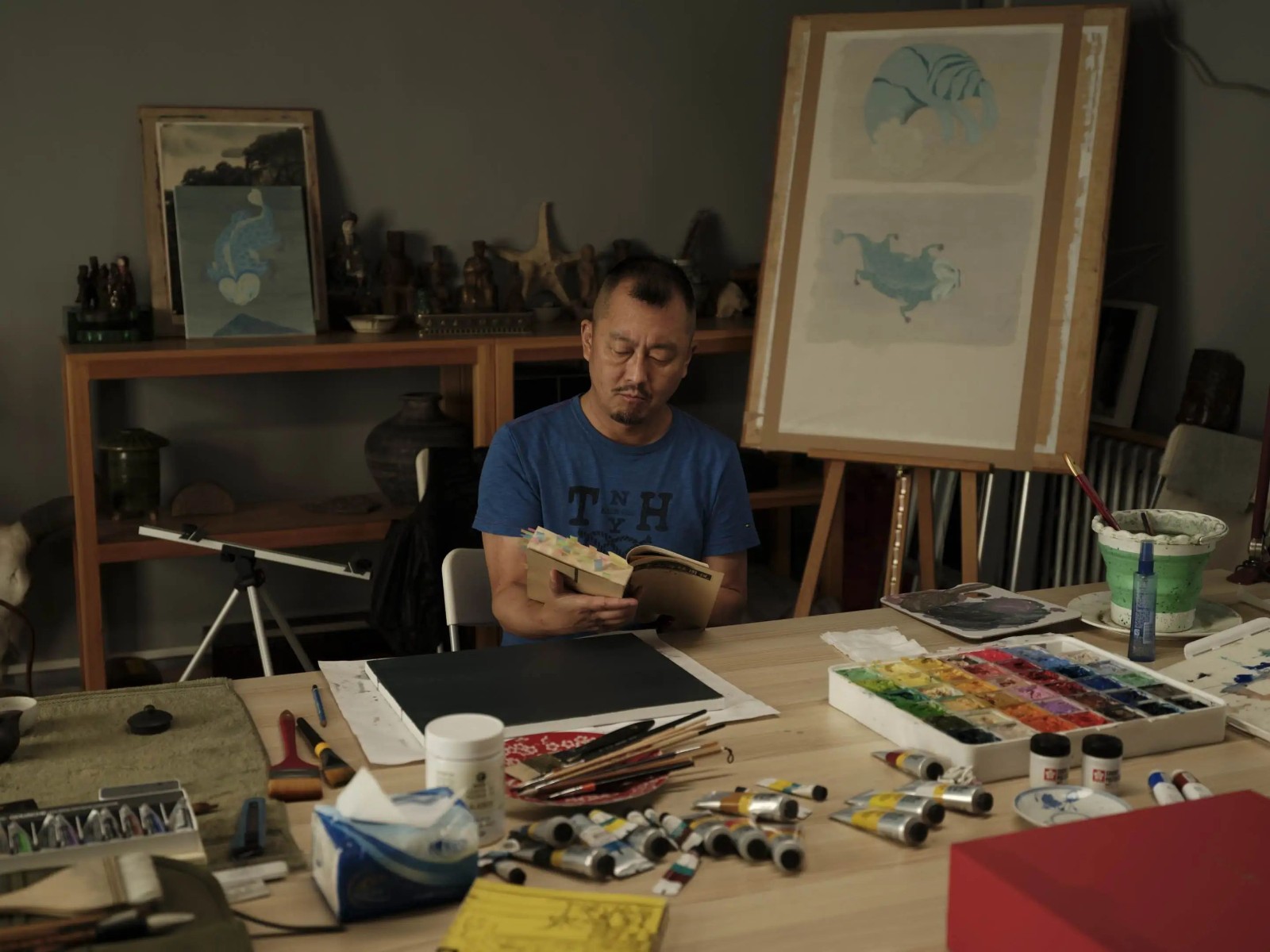 The creative process of “Mythical Beasts from Mountains and Seas”
The creative process of “Mythical Beasts from Mountains and Seas”
CAFA ART INFO: “Mythical Beasts from Mountains and Seas” include two series, “New Edition of Imitating Antiquity” and “Worldliness”. “New Edition of Imitating Antiquity” combines the mythical beasts in ancient mythology with scenes from ancient masterpieces of paintings such as “A Journey in the Autumn Mountains” and “The Emperor Minghuang’s Journey to Shu (Sichuan)”. What creative process did this series go through?
Wang Chuan: Around 2020, I got a hard drive by chance with more than 20,000 high-definition scans of classic paintings, including classical paintings from major museums around the world and ancient Chinese paintings. Observing these ancient paintings triggered my creative ideas.“New Edition of Imitating Antiquity” as an ancient painting series is to echo the photography series of “Worldliness”. In “Worldliness”, I used grating materials with semi-dynamic visual characteristics. While in the ancient painting series, I hope to restore the original state of these ancient paintings.
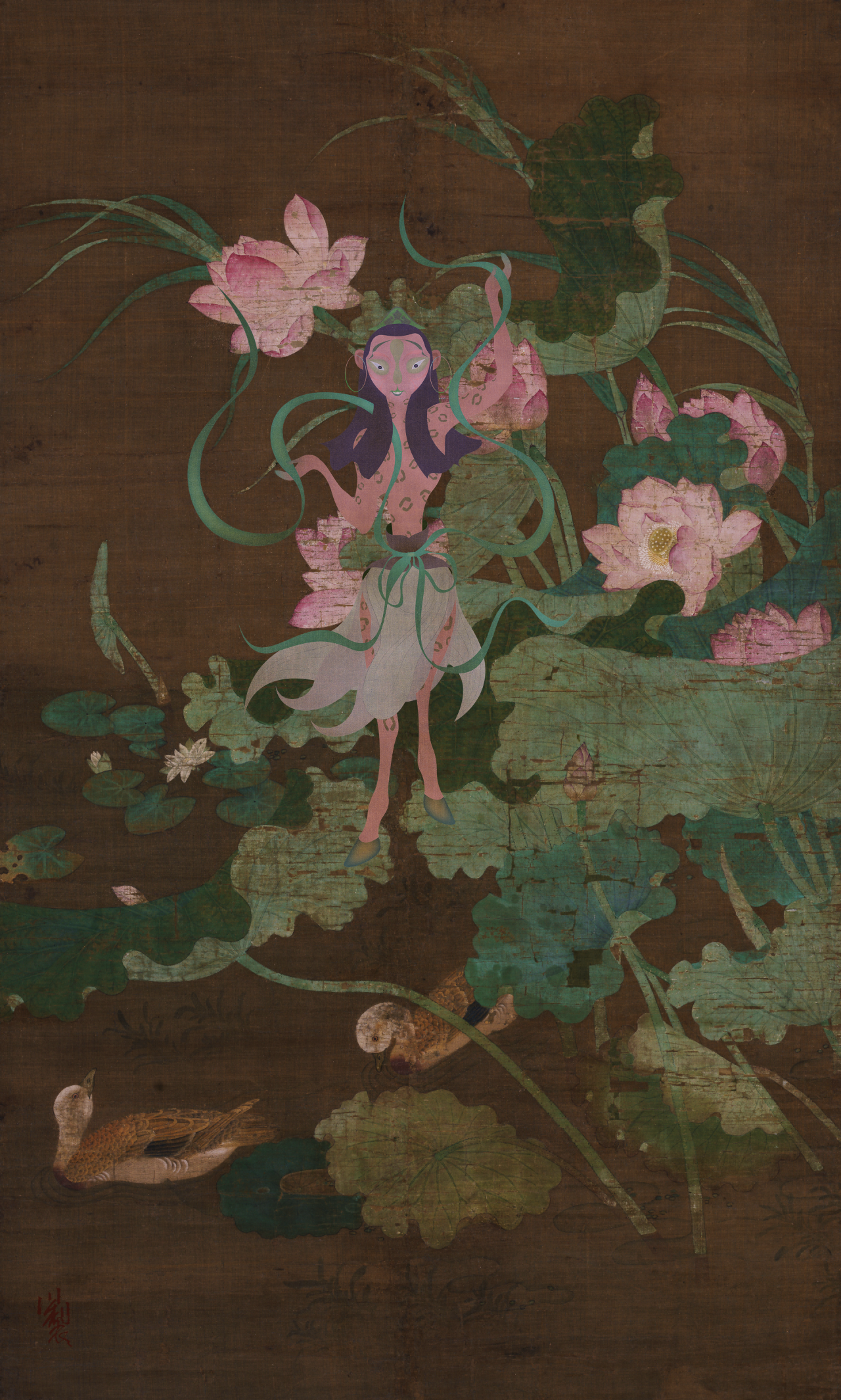 Lotus, Birds, and Wu Luo, Archival Inkjet Print, 110cm×180cm, 2023
Lotus, Birds, and Wu Luo, Archival Inkjet Print, 110cm×180cm, 2023
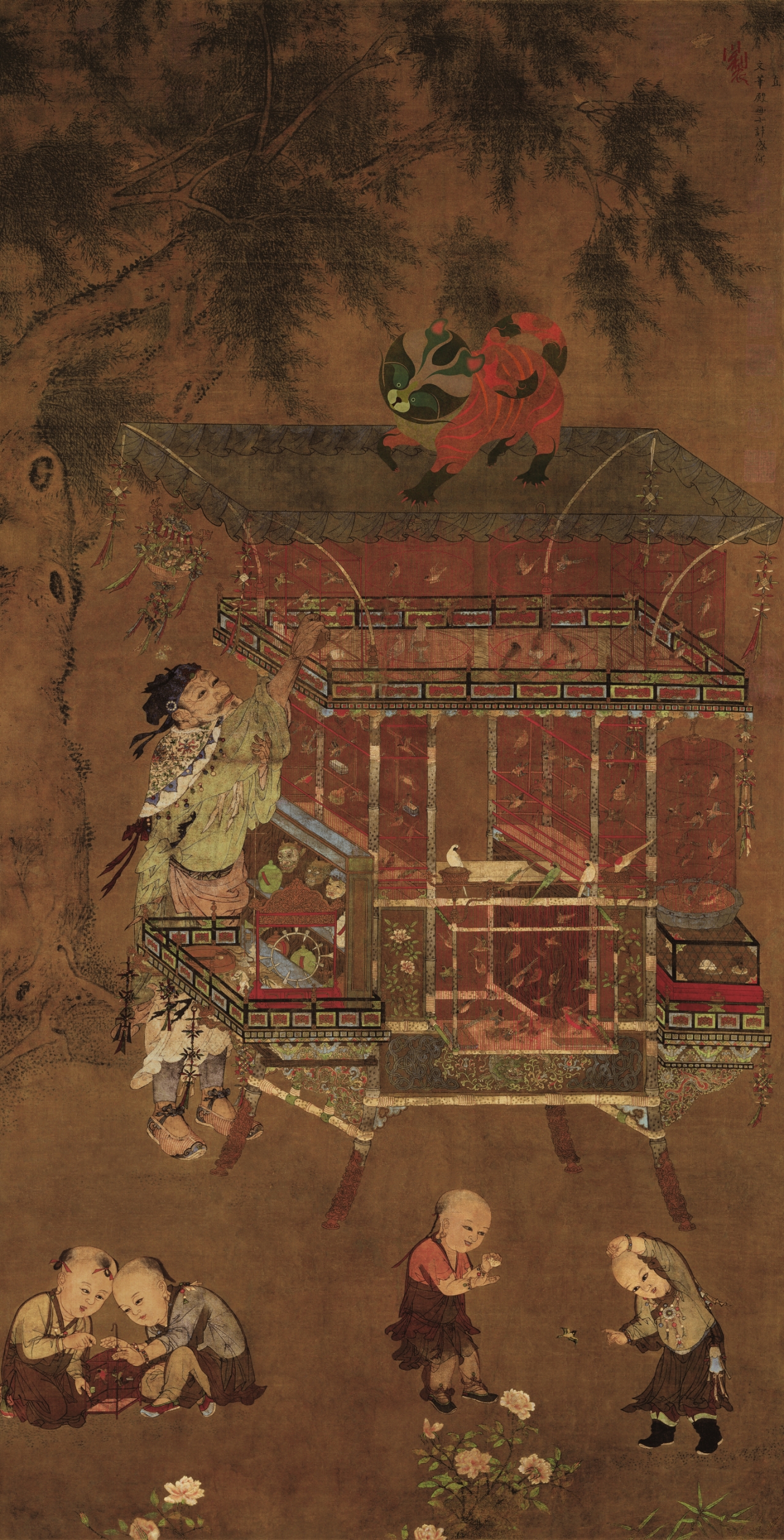 Meng Huai, and the Peddler, Archival Inkjet Print, 102cm×200cm, 2023
Meng Huai, and the Peddler, Archival Inkjet Print, 102cm×200cm, 2023
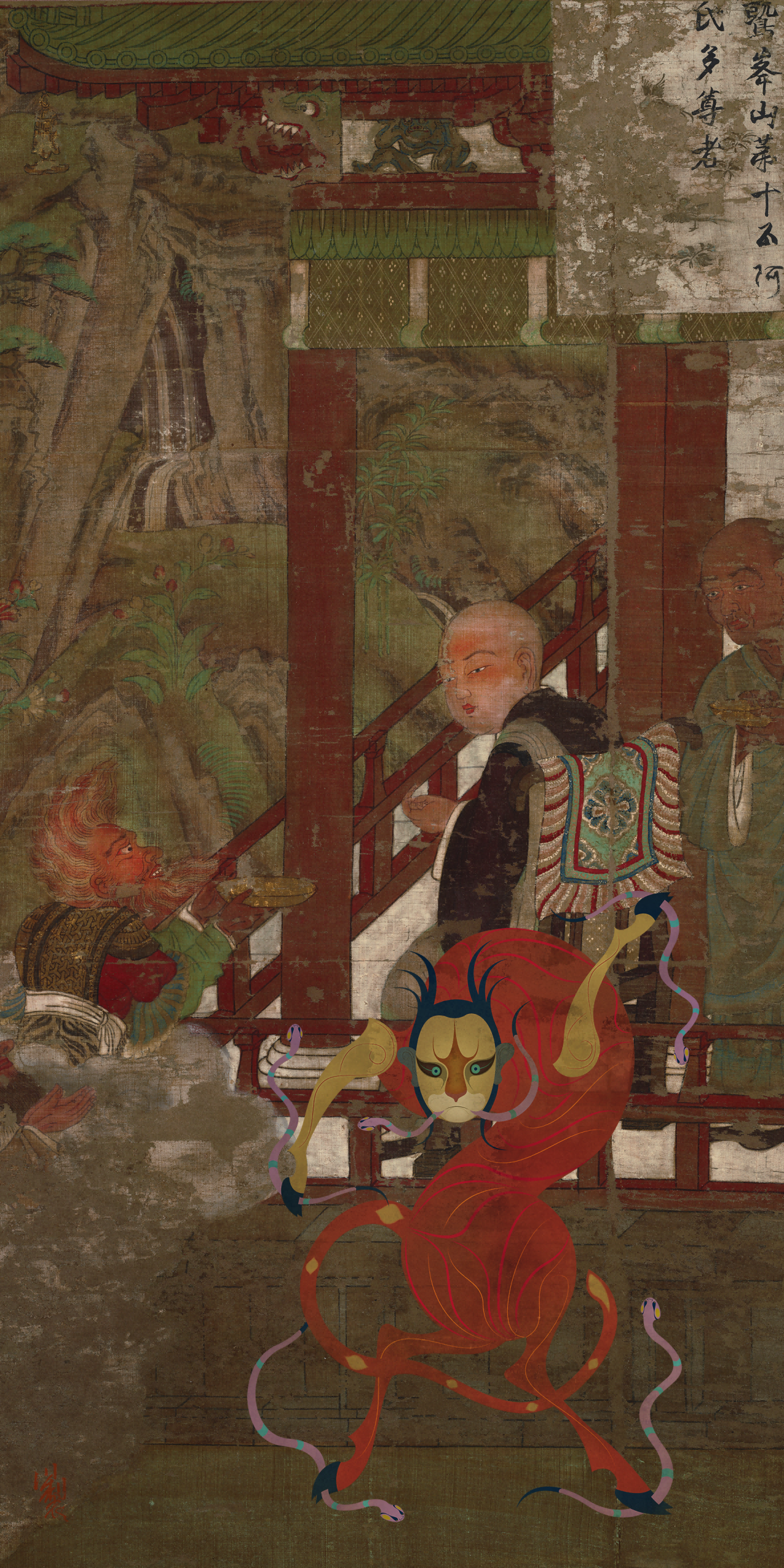 Qiang Liang did good turns, Archival Inkjet Print, 62.5cm×125cm, 2023
Qiang Liang did good turns, Archival Inkjet Print, 62.5cm×125cm, 2023
Originally, I wanted to use silk in the “New Edition of Imitating Antiquity” , but the material of silk limits the size that can be expressed, and the effect presented on silk is also unsatisfactory, so I finally gave up the texture of silk and turned to the modern micro-spray mounting form. But there are also length requirements and material restrictions. For example, the enlarged “Along the River During the Qingming Festival” is 13 meters long and it can only be presented in the form of ancient scroll.
Correspondingly, the matching work of mythical beasts and paintings in the “New Edition of Imitating Antiquity” is more complicated, and the requirements for understanding image and text are also higher, otherwise it is impossible to accurately judge the matching degree of mythical beasts and corresponding ancient paintings. This is a long and interesting work, and it is also accompanied by more arduous textual work than the “Worldliness” series.
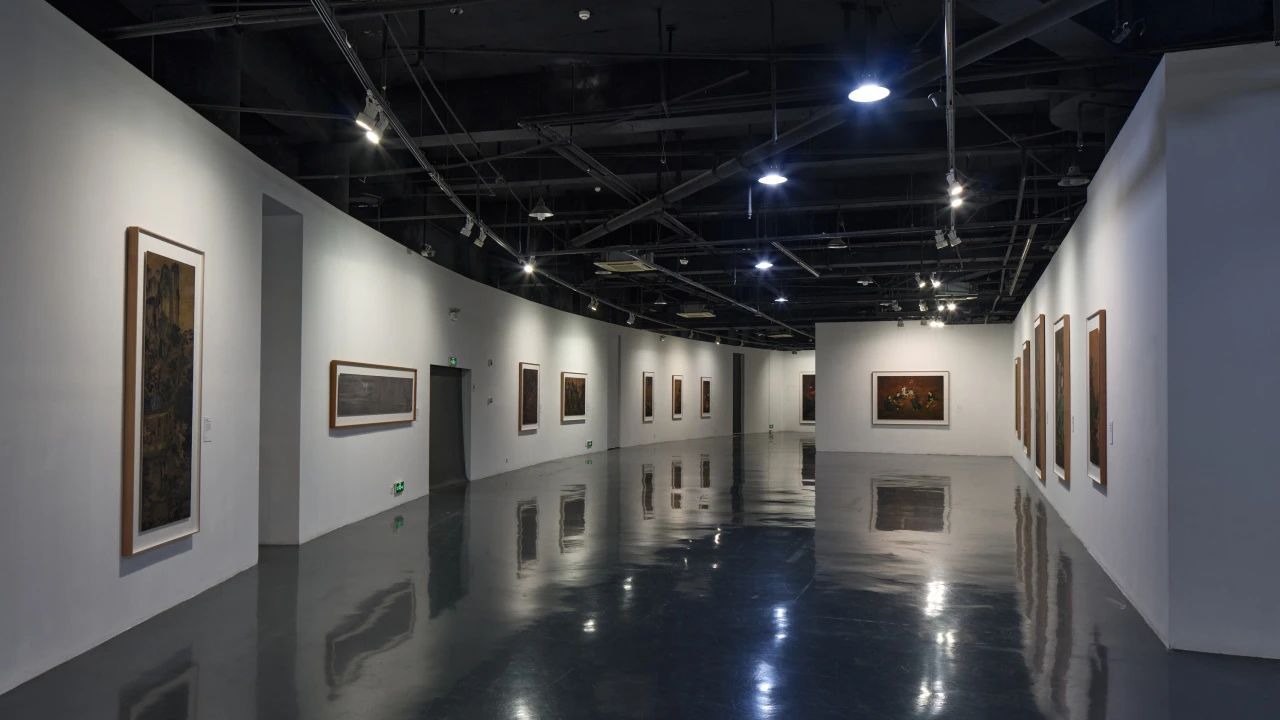
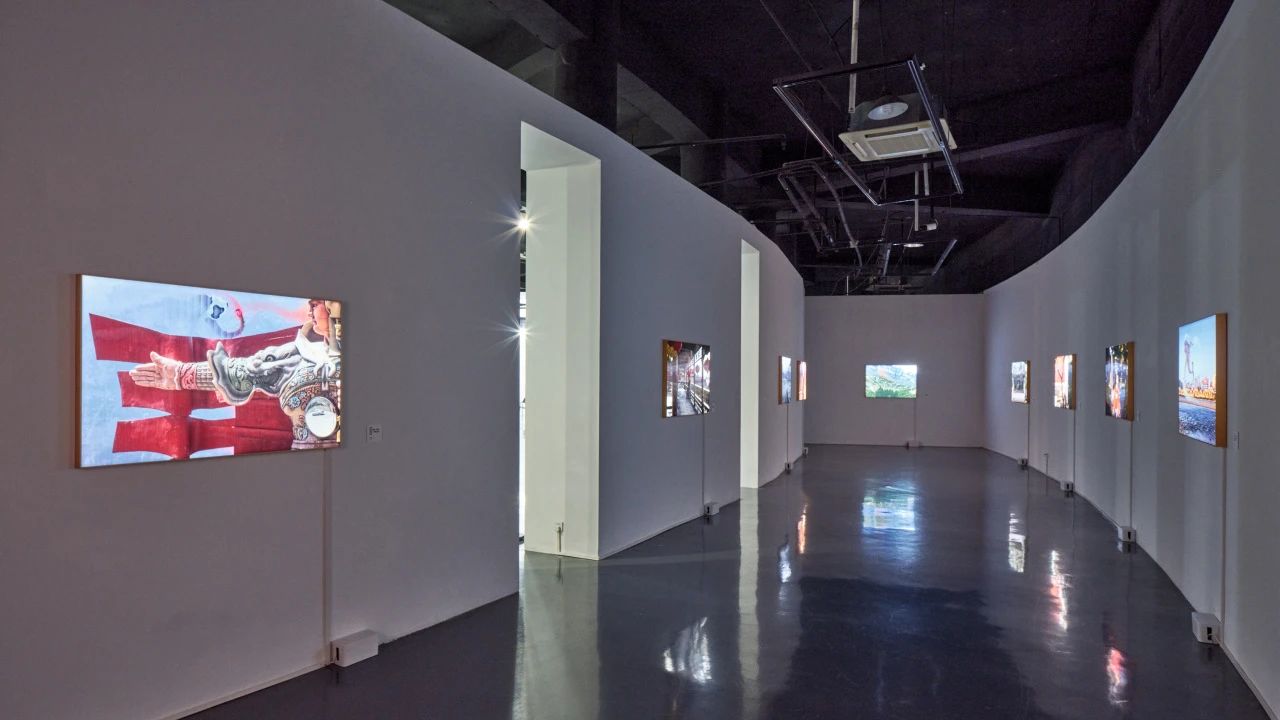
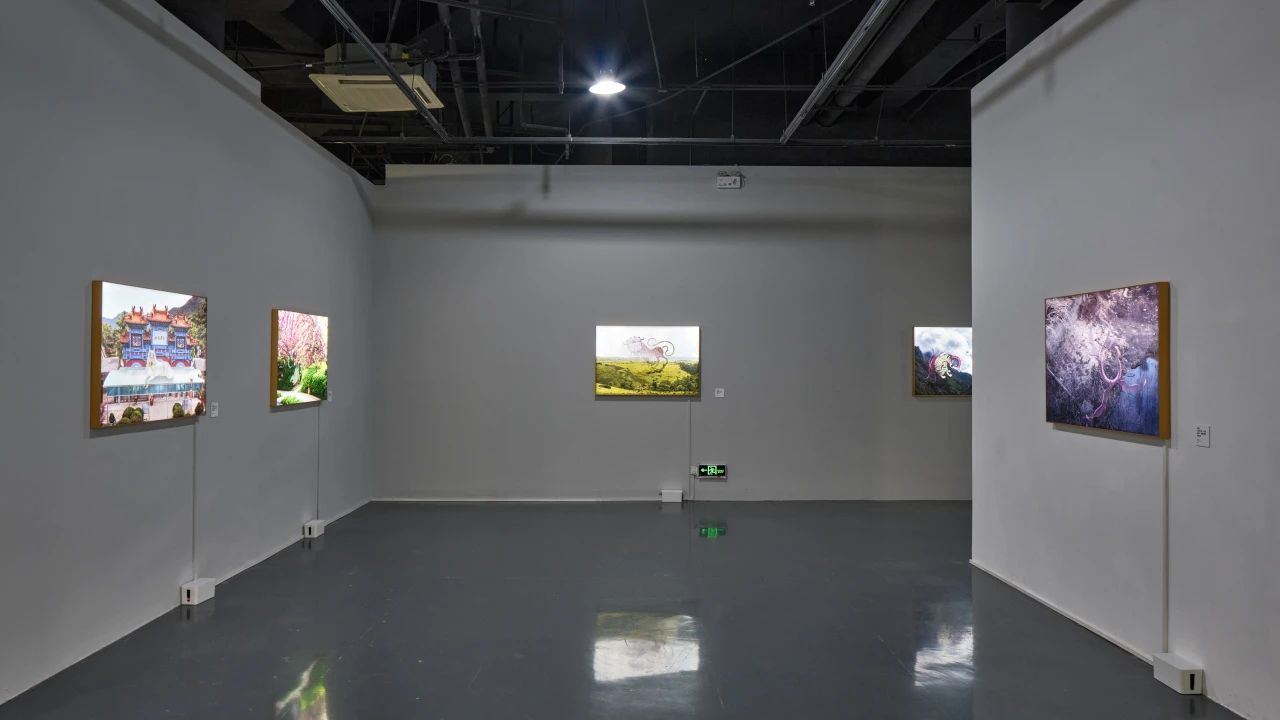 Exhibition View of “Re-creation: The Classic of Mountains and Seas”
Exhibition View of “Re-creation: The Classic of Mountains and Seas”
The words on the exhibition labels at Hubei Museum of Art, are actually a part of he “New Edition of Imitating Antiquity”, which were not concise messages in the traditional sense. They retain the sense of ancient language and embed current content factors to facilitate understanding, otherwise the disseminating efficiency of the series might be greatly reduced. These textual factors and the paintings jointly form complete structures. I hope that the exhibition is in a gray and hazy state, and the ancient paintings projected by the on-site light boxes can be presented in a sense of suspension to provide a special way of viewing for the audience.
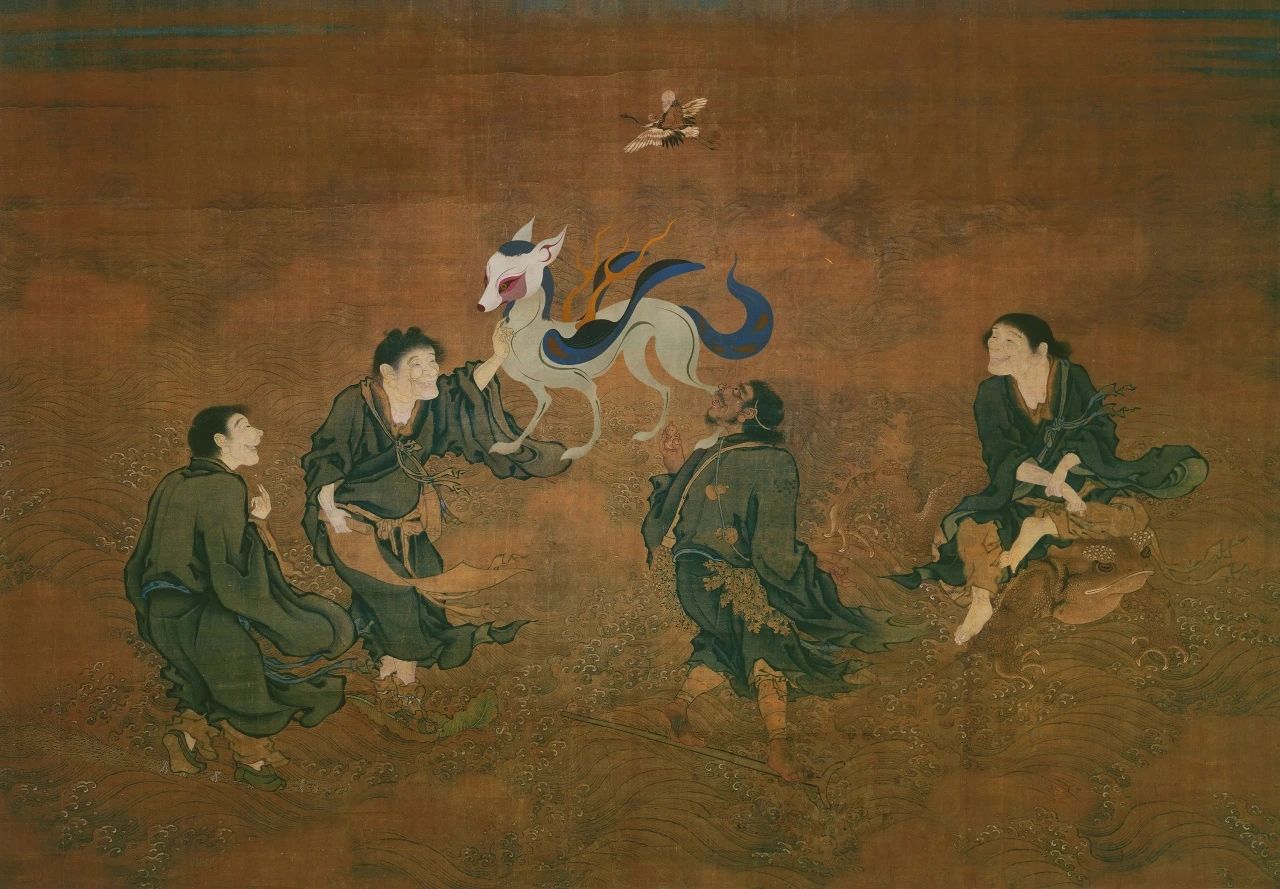 Five Immortals Presented Longevity, Archival Inkjet Print, 180cm×125cm, 2023
Five Immortals Presented Longevity, Archival Inkjet Print, 180cm×125cm, 2023
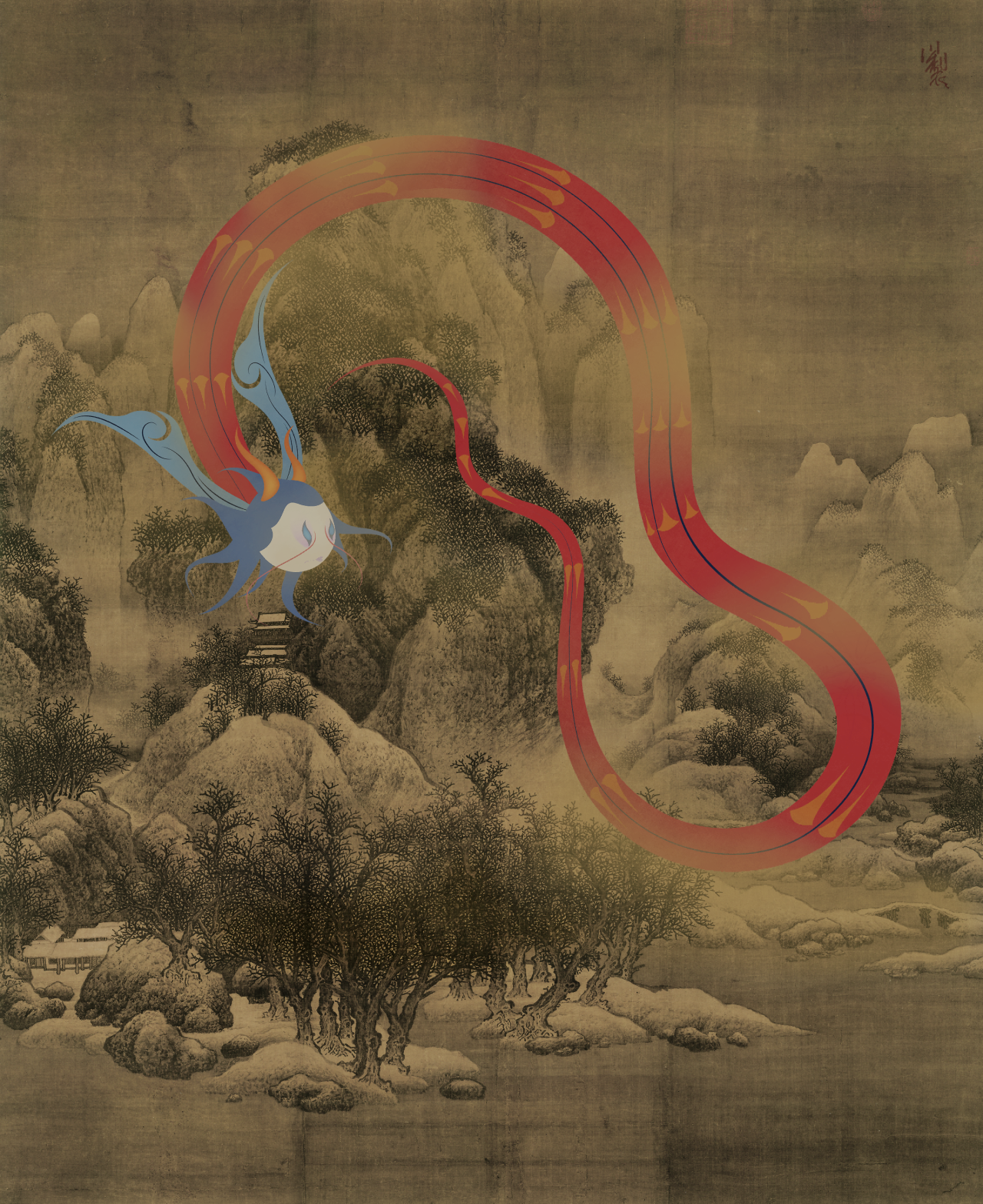 Cold Scene with Zhu Yin, Archival Inkjet Print, 150cm ×183cm, 2023
Cold Scene with Zhu Yin, Archival Inkjet Print, 150cm ×183cm, 2023
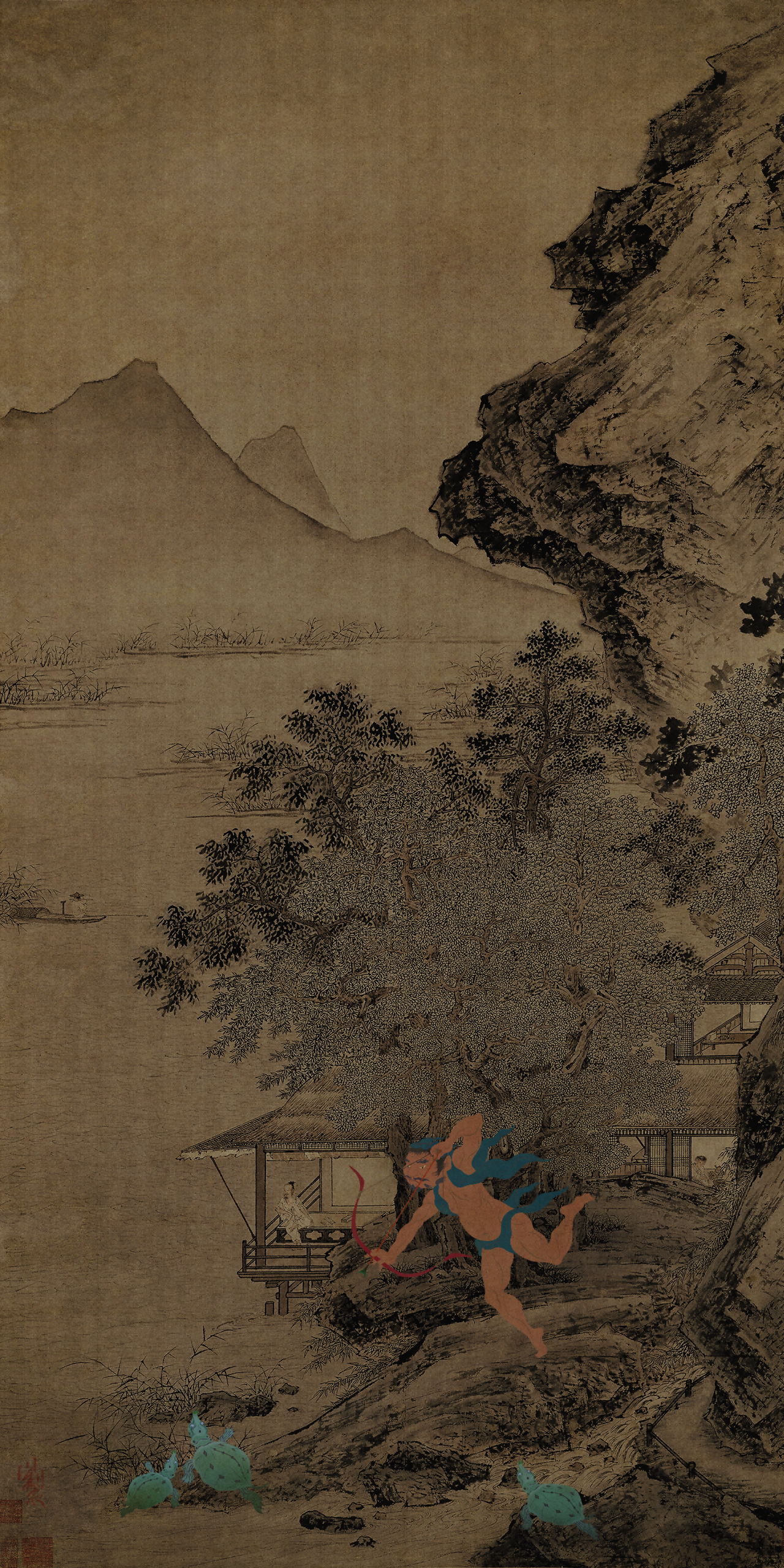 Yu Di Shooting Pests, Archival Inkjet Print, 62.5cm×125cm, 2023
Yu Di Shooting Pests, Archival Inkjet Print, 62.5cm×125cm, 2023
CAFA ART INFO: In the “Worldliness” series, mythical beasts have entered our familiar modern life again. Its common point with “New Edition of Imitating Antiquity” is that they seem to convey a certain humorous temperament. What is your consideration to include these beasts in this “new edition” of visual images?
Wang Chuan: I described this sense of humor as “fun” before. I hope that my process of creation and viewing from the perspective of audience are both interesting. I think that the interesting thing, whether it is a visual coincidence, or good-looking and interesting, is instantaneous. The very interesting part must trigger the thinking level and encourage the audience to spontaneously ponder and compare.
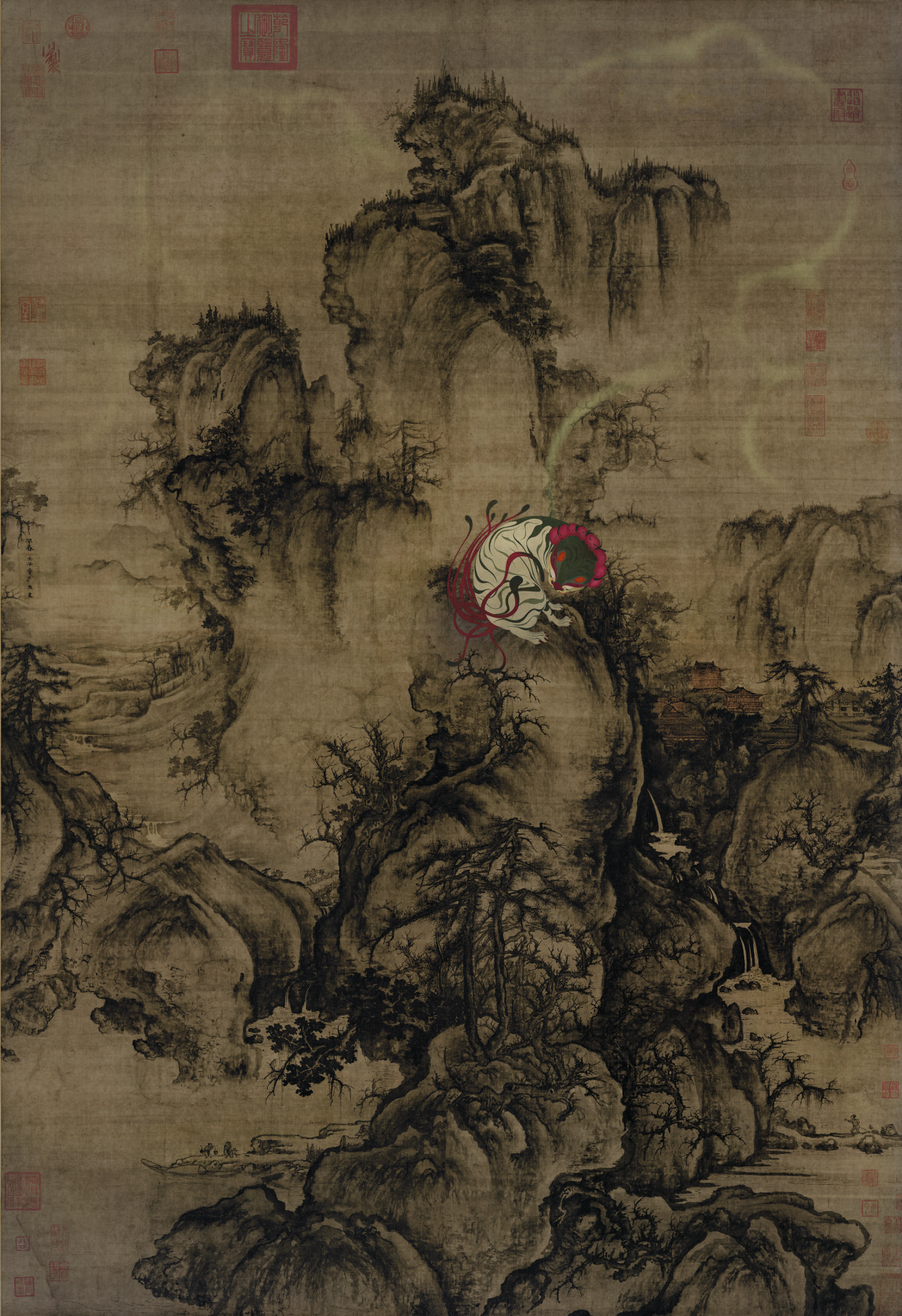 Lu Wu in Early Spring, Archival Inkjet Print, 120cm×175cm, 2023
Lu Wu in Early Spring, Archival Inkjet Print, 120cm×175cm, 2023
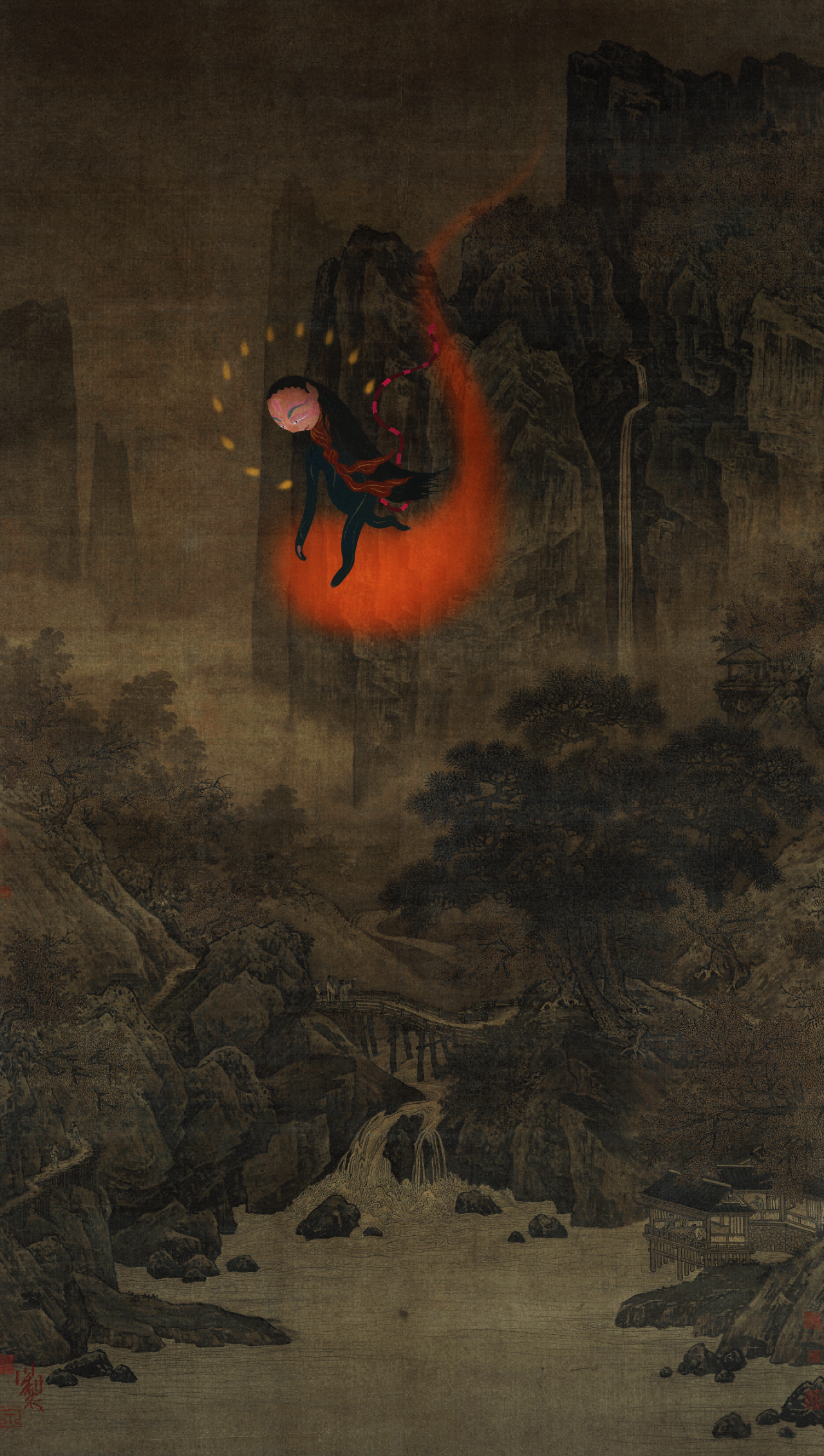 Tai Feng in Autumn Mountain, Archival Inkjet Print, 120cm×212cm, 2023
Tai Feng in Autumn Mountain, Archival Inkjet Print, 120cm×212cm, 2023
Like treasure hunting, I started my creations from such small details, and sometimes I did the opposite, such as the story of Jing Wei. Jing Wei's behavior was probably completely incomprehensible even to its own kind. Its persistence must be very desperate and tired, and it has always been regarded by the Chinese as a representative of rebelling spirit. I arranged it into “Cottonrose Hibiscus and Egret” in the Ming Dynasty with a typical image mode of auspicious meanings, so that it formed a visual interaction with the egret, tree and hibiscus in the original composition. Jing Wei in my work, who looked sad and tired, fall on the tree, holding a coral branch symbolizing auspiciousness in its mouth, but a tear flowed from the corner of its eye. From the initial image creation to every scene in the two series of “New Edition of Imitating Antiquity” and “Worldliness”, the sense of humor or fun factors run through my entire creative process, but they were hidden, endowing the audience with a deeper sense of immersion and more room for thinking, rather than just staying at a purely visual level.
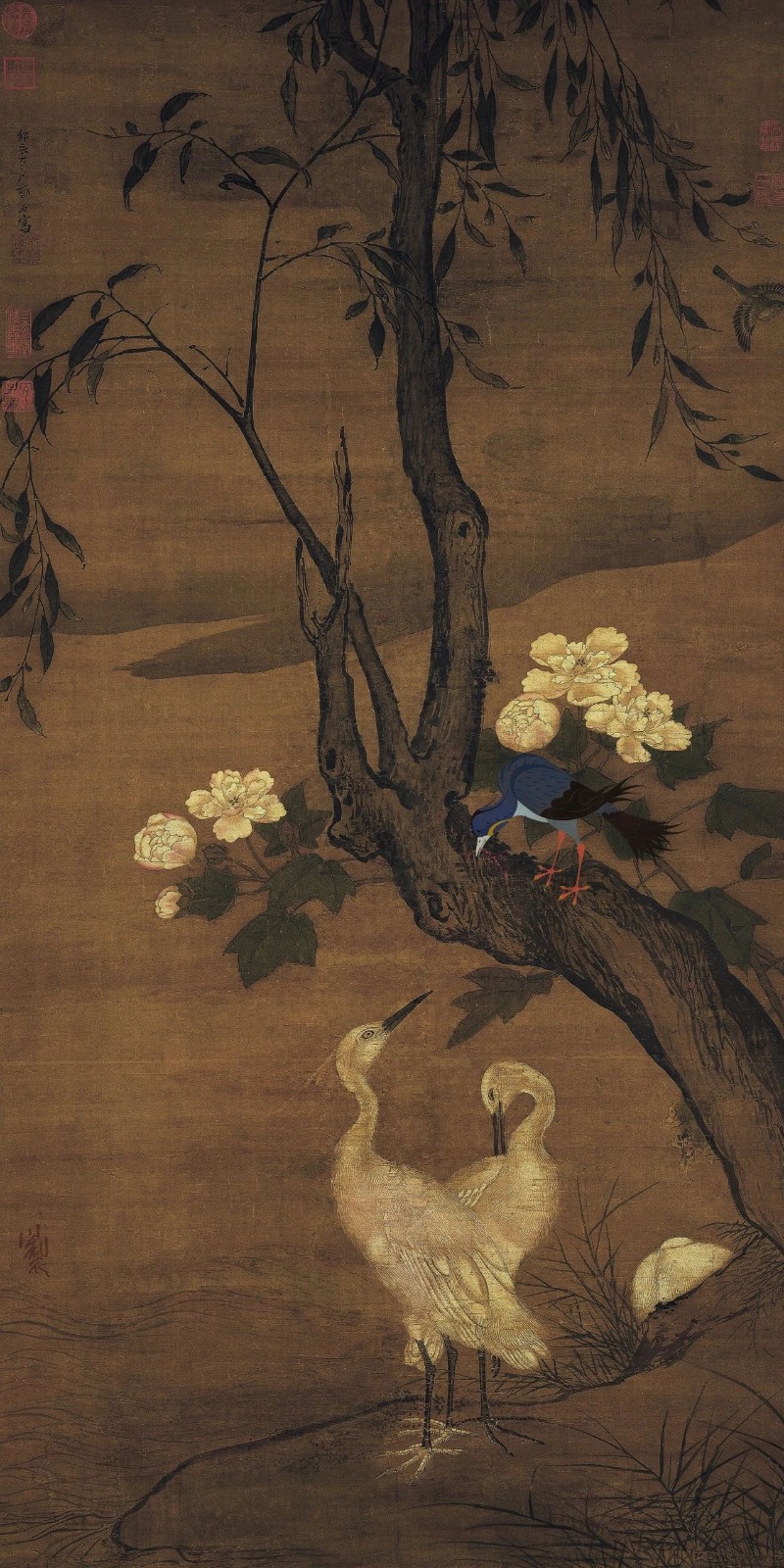
Cottonrose Hibiscus, Egret and Sad Bird, Archival Inkjet Print, 62.5cm×125cm, 2023
CAFA ART INFO: What is the biggest challenge in your creation of the mythical beasts from The Classic of Mountains and Seas? How to transform and amplify the unique charm of traditional culture and attract more current spectators? Or even create a cultural IP?
Wang Chuan: In fact, the work I have done is just the beginning. Although some companies and art institutions have come to seek further cooperation, I am still far from summarizing experience from the perspective of a creator. I am more concerned about how to avoid problems and what I don’t want to create. For example, in terms of applying and borrowing traditional Chinese elements, I require my borrowing to be of regularity, spirituality and methodology, and I cannot directly misappropriate or just stay at the level of images.
It also includes why I wrote a lot of texts for the ancient painting series. I think it is necessary to explain the background of these Chinese painting classics to the audience and introduce that this is a creation standing on the shoulders of predecessors. Of course, this series also involves some specific formal research. For example, I extracted the particularly important form of curves from the modeling rules of animals and figures on artifacts before the Han Dynasty. This also includes the study of traditional color system in China. How to expand on the basis of traditional colors without remaining in a retro state requires us to explore while practicing it.
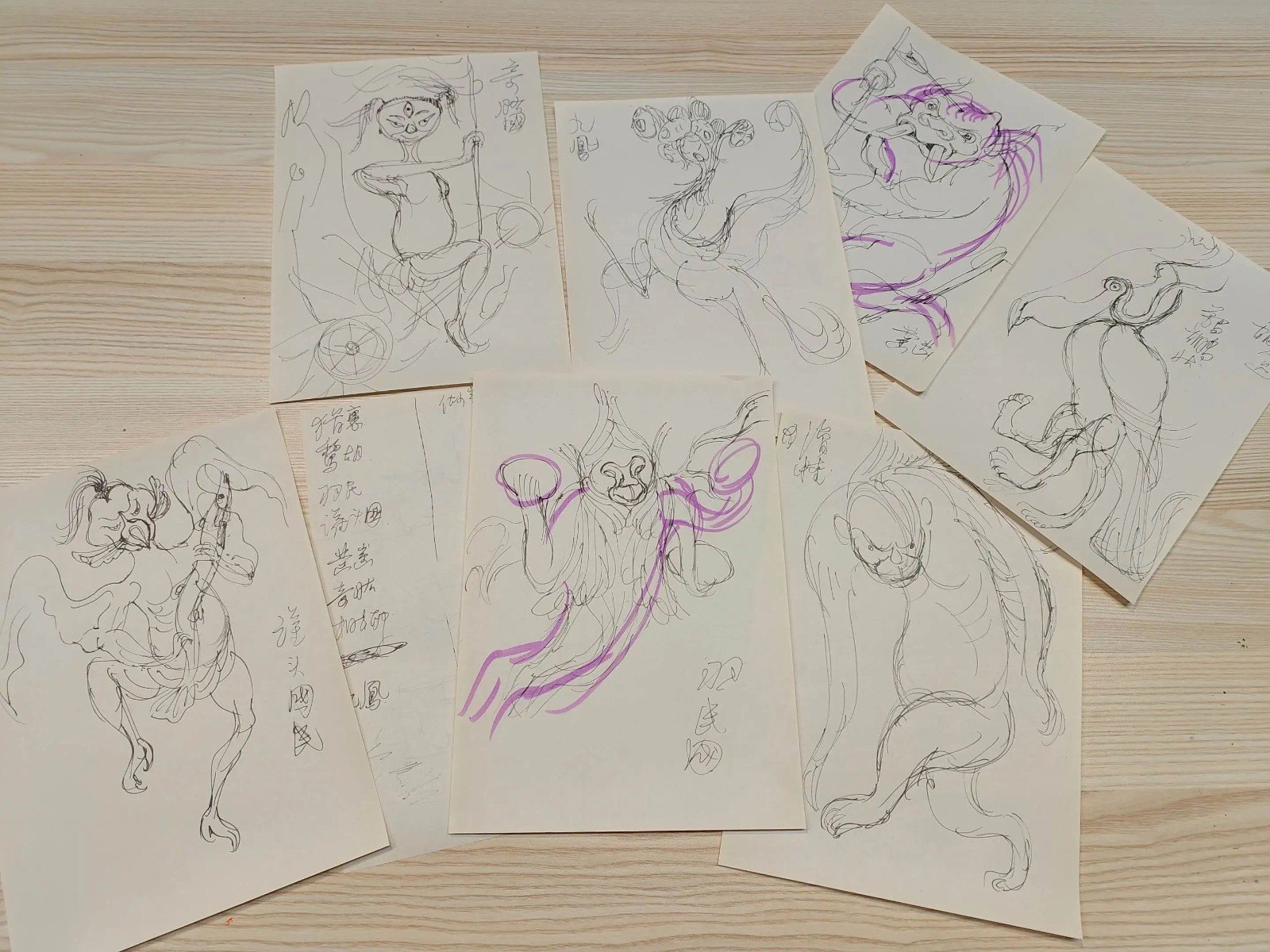
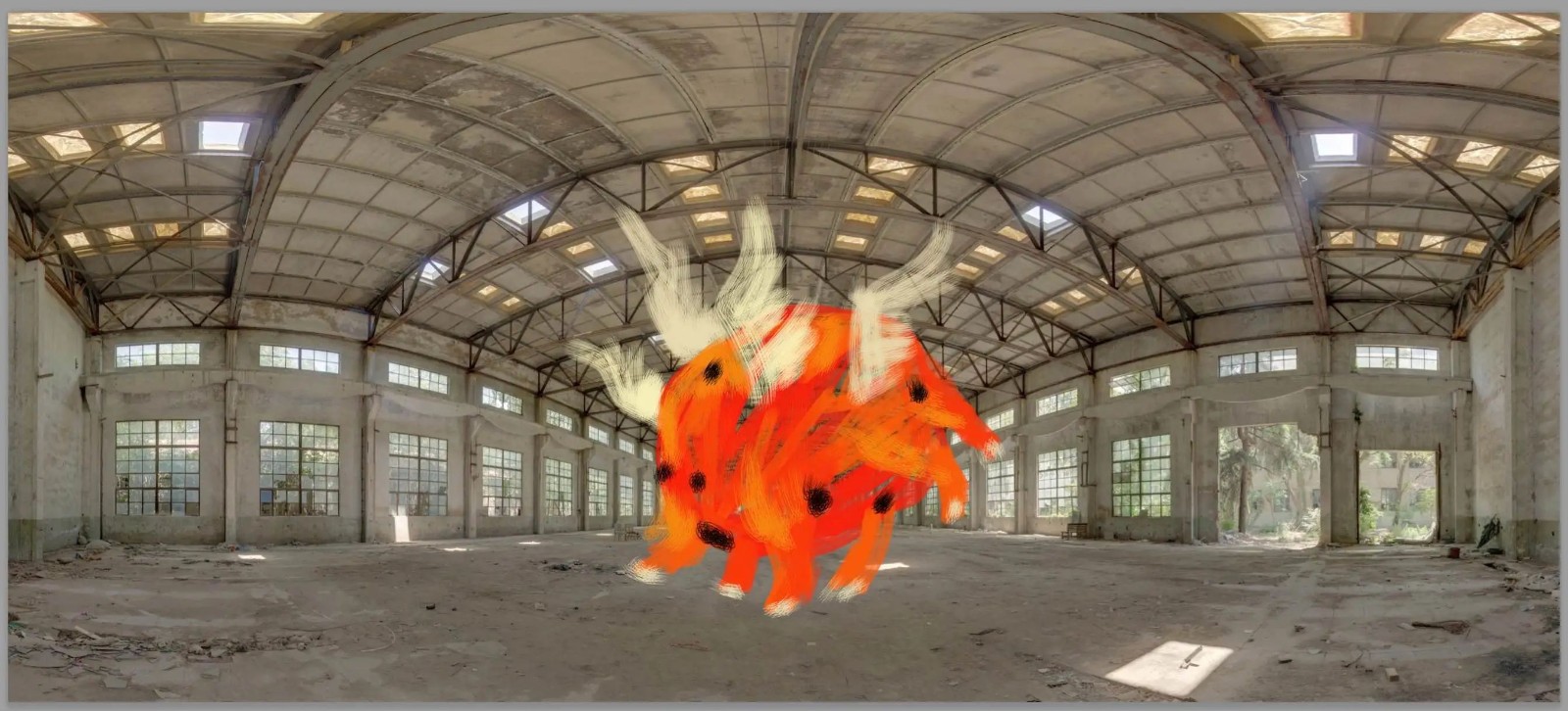

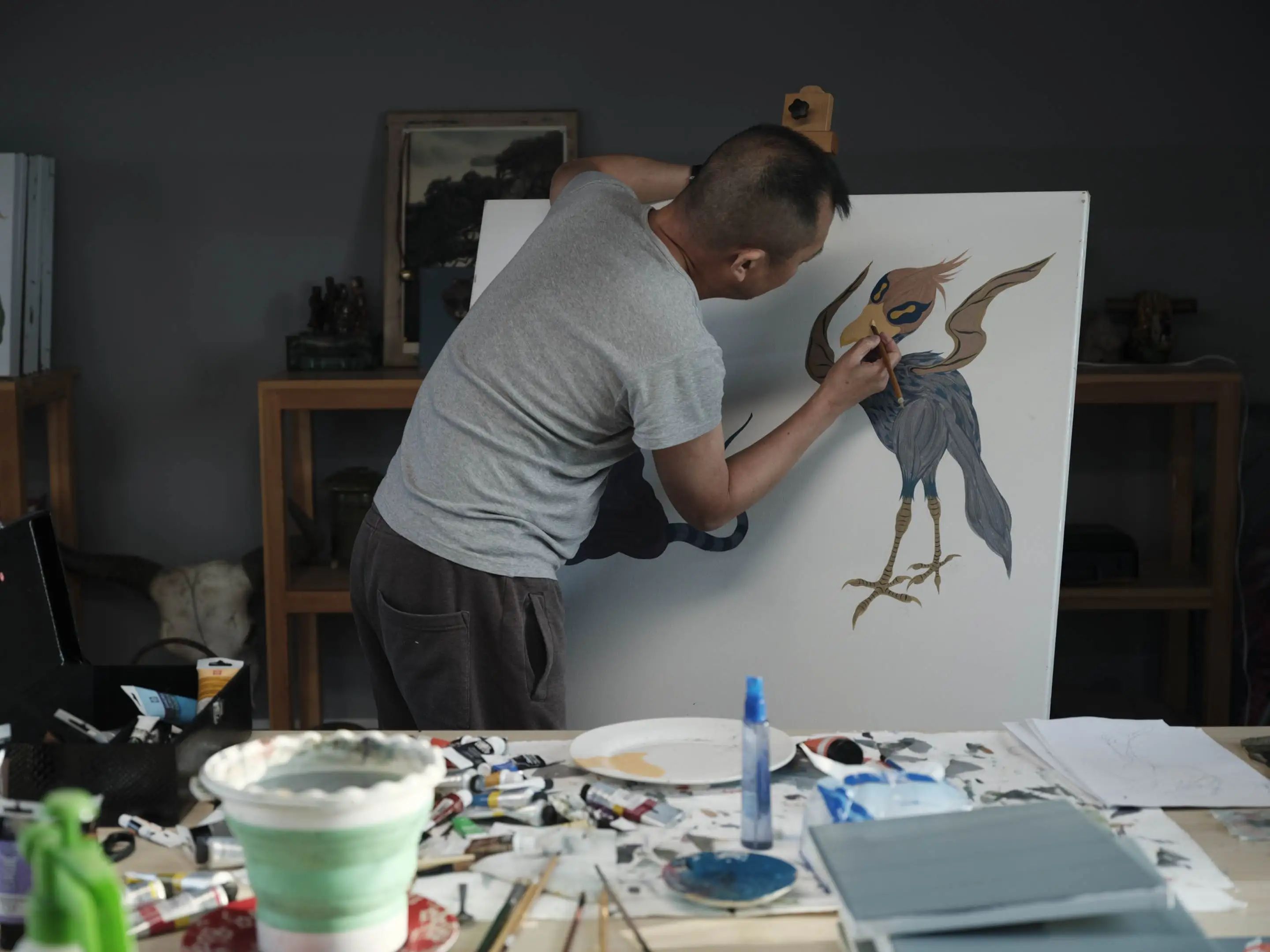 Creation Drafts and Steps
Creation Drafts and Steps
The “Mythical Beasts from Mountains and Seas” series also allows me to integrate different themes of modeling. I have been engaged in illustration paintings facing children’s reading for many years, which makes me very familiar with the structure, form, expression and characteristics of animals. Therefore, I have blended the characteristics of animal structures into the classical Chinese modeling method, so that the modeling has a little perspective effect, and it is easier to be involved with photography, an art form with a sense of space and perspective. But this is just my current creative method, and it still cannot be refined into a certain methodology.
II. Photography, Painting and Contemporary Art
CAFA ART INFO: You studied painting and then specialized in photography. How do you define the “Mythical Beasts from Mountains and Seas” series? Does it belong to photography or painting, or do you try to blur the boundaries between the two and give it contemporary nature?
Wang Chuan: The reason why this exhibition does not specify whether it is a painting exhibition or a photography exhibition is because I can feel that people, including myself, do not know how to define the works in the exhibition with painting or photography. I think they also wander outside of contemporary art. It may have a certain degree of contemporaneity, but it is not contemporary art in the standard sense. Contemporary art actually has boundaries. Even if the boundaries are vague, when something appears outside the boundaries, they will appear unusually clear. But it doesn’t matter. I am even happy because it means avoiding typified creation. From the perspective of working methods, “Mythical Beasts from Mountains and Seas” is definitely not traditional, but it is not modern either.
CAFA ART INFO: That is to say, the “Mythical Beasts from Mountains and Seas” series may not be photography, nor painting, and it does not even belong to contemporary art. So, as your “Mosaic” series is a photographic work classified as contemporary art, did you have a strong sense of creation when you were creating this series? How did this creative mentality change?
Wang Chuan: Not only consciousness, I was even trying to become “contemporary” in the process. The West Bund Museum and the Centre Pompidou have conducted a collaborative project “Another Avant-garde: Photography 1970-2000” invited me to participate in the Chinese perspective section. I am also honored to be able to participate in such a groundbreaking exhibition featuring photography. It reminds me of a sentence said by Alain Sayag, Director of the Centre Pompidou and it played a decisive role in my past creative direction. He explained some of the principles and standards for the Centre Pompidou’s collection of photographic works. One of them is, “We judge from the aesthetics, the visuals, the content, and the theme of this work, but we also value the contribution of an artist’s work to the development of medium.” This directly encouraged me to start studying pixels. But when it came to creating the “Mythical Beasts from Mountains and Seas” series, I no longer considered this. I only considered whether I could recreate “The Classic of Mountains and Seas” in the way I wanted to express. I did not know what this change meant, but it came like this. As for how it will develop in the future, I just want to do it thoroughly at this stage.
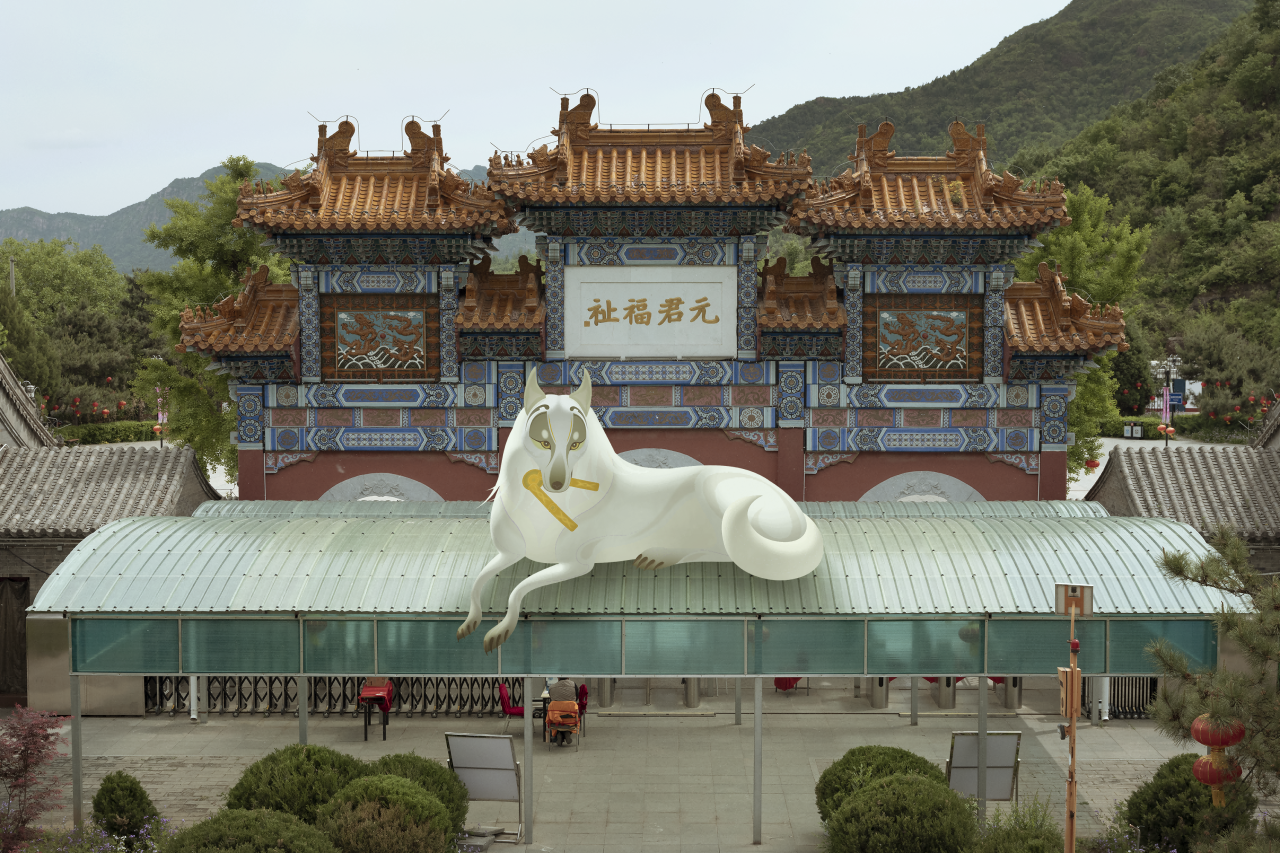 White Wolf, Grating light box, 120cm×80cm×5cm, 2023
White Wolf, Grating light box, 120cm×80cm×5cm, 2023
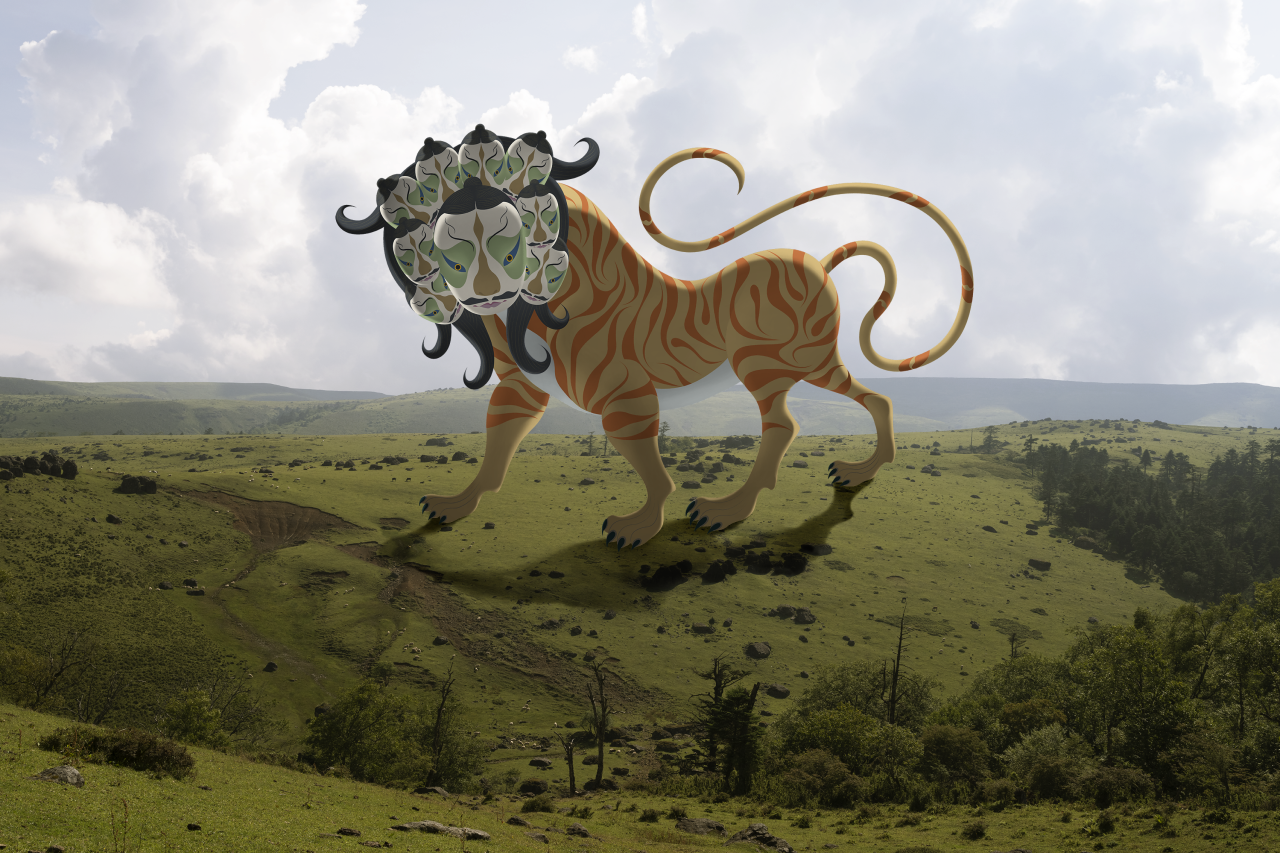 Kai Ming Beast, Grating light box, 120×80×5cm, 2023
Kai Ming Beast, Grating light box, 120×80×5cm, 2023
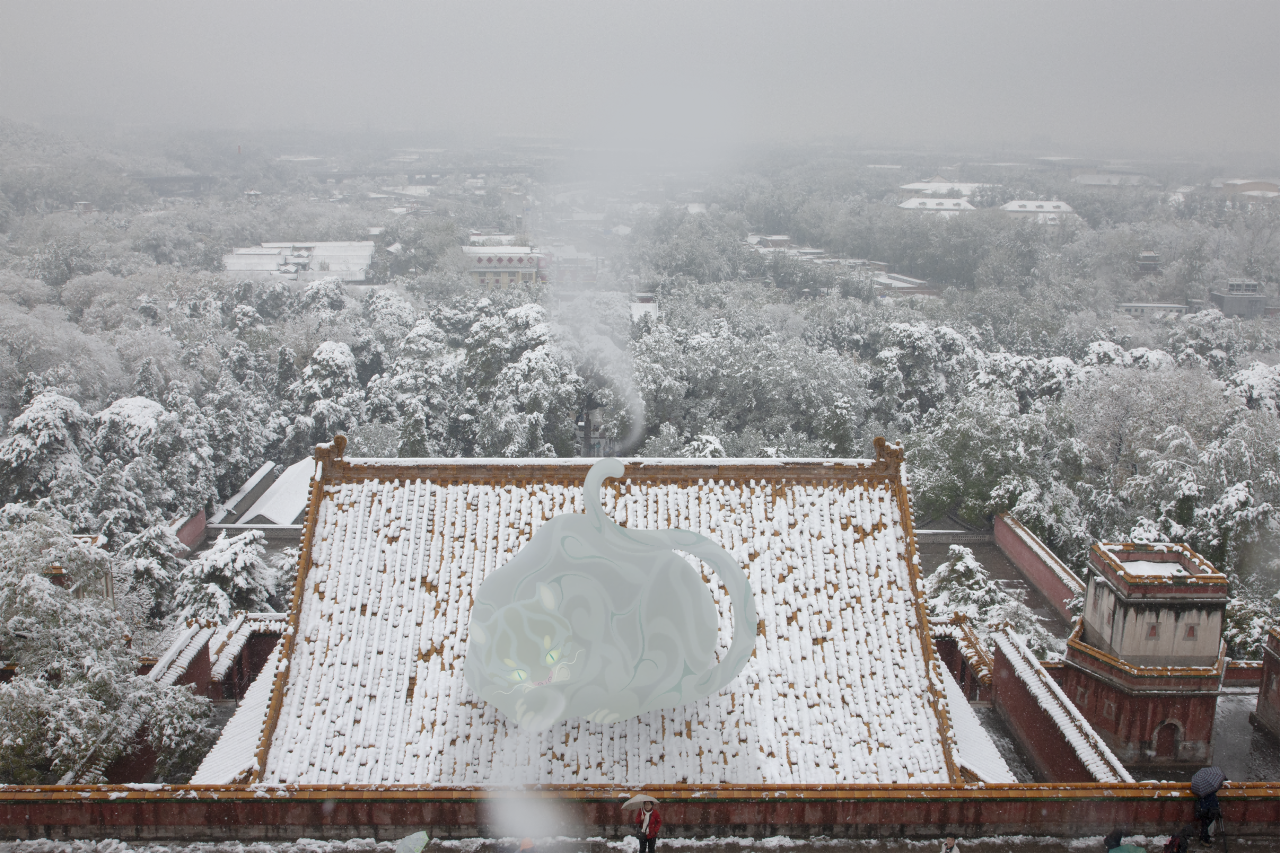 Meng Ji, Grating light box, 120cm×80cm×5cm, 2023
Meng Ji, Grating light box, 120cm×80cm×5cm, 2023
CAFA ART INFO: What influence does painting have on your photography practice? Does it affect your concept of photography as a medium?
Wang Chuan: Absolutely. It has been discussed whether people who learn photography need to be good at painting in the field of photography. In my opinion, photography is an open medium. Its intersection with art is only part of it, and its intersection with painting will be even less. Learning painting is not necessary for people who create photography, but it is definitely not bad. First of all, mastering the technology may bring more diverse choices. Secondly, each technique is associated with some consciousness, which is more important for the support of creation than the specific technique. For example, when I explored digital synthesis works in my early works, it was completely out of a certain painting consciousness, making the painting realize the effect of photography. It is completely different from photographic thinking, perhaps closer to fantasy or film.
Photography and painting have always been closely related in history. For example, the multiple focal points in Caravaggio’s paintings during the Renaissance. If we only understand it from the level of oil painting, its weirdness is not obvious. On the contrary, when we re-measure it with the help of the visual laws of photography, each focus in the image is like the depth of field from a camera. In this way, the painting has multiple focal points and multiple depths of field, and it will be found that the presentation in the image is almost impossible.
During that historical period, painting and photography were mutually supportive. They have been entangled and gradually became a historical topic, but I am more concerned about whether the image I created is interesting, whether people are willing to stop and watch for two more minutes, and it does not matter whether it is photography or painting. Up to now, the emergence of AI has equalized art media again, and everyone can create art. This goes back to what art is about. I think as long as you make art, the most important thing is expression, and the second is communication and dissemination. These are all related to whether art production is meaningful. Therefore, I particularly value the publicity of “Mythical Beasts from Mountains and Seas”. I would like to present them in any public venue and more people can watch them, and they will not just be presented in art museums and galleries.
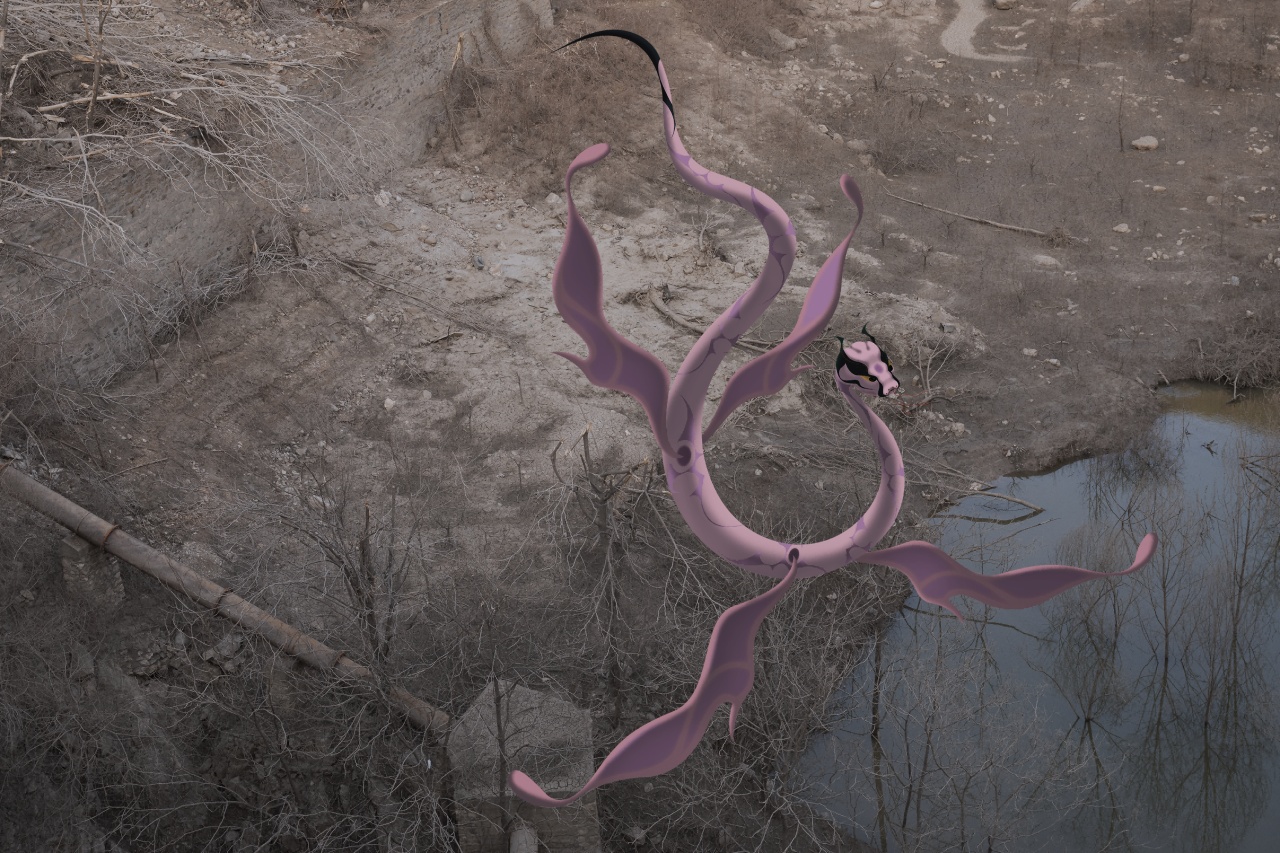 Ming Snake, Grating light box, 120cm×80cm×5cm, 2023
Ming Snake, Grating light box, 120cm×80cm×5cm, 2023
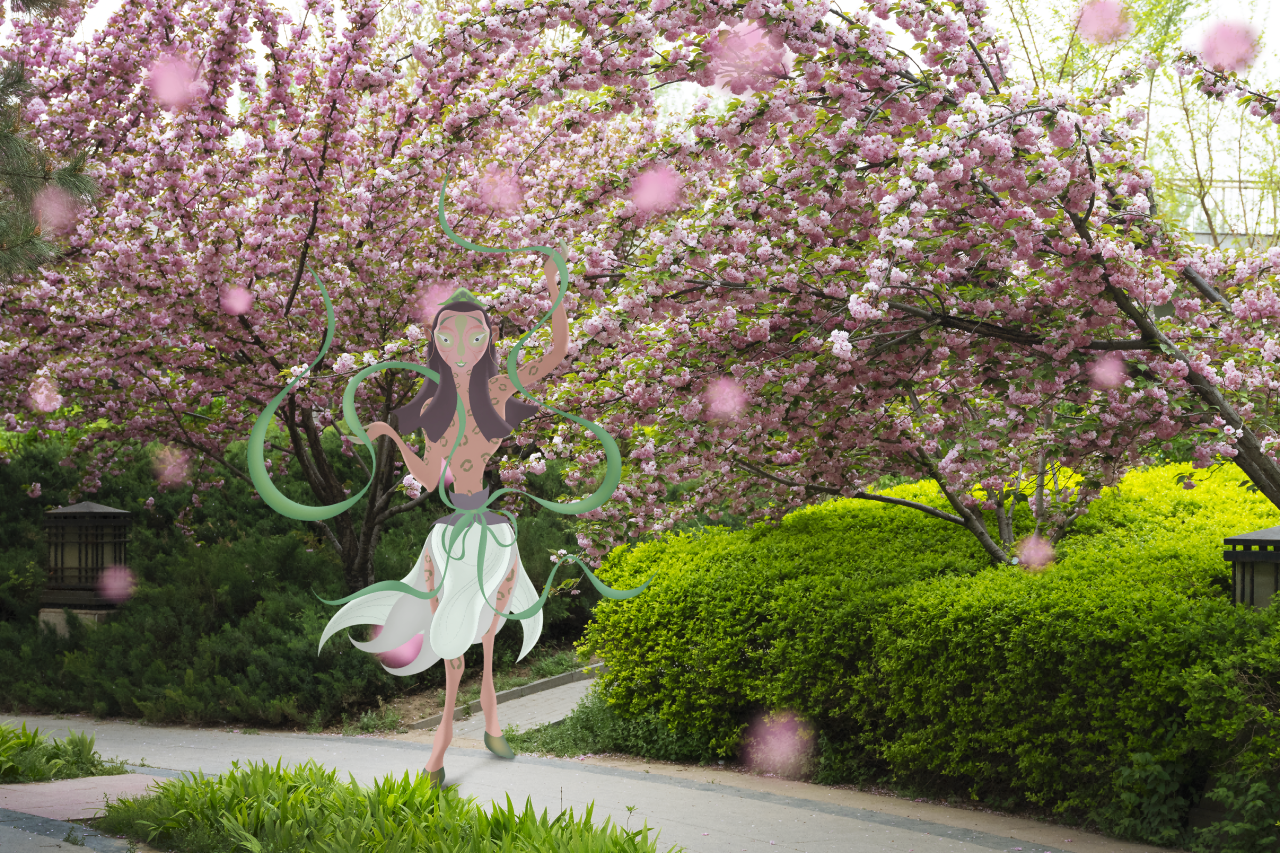 Mythical Wu Luo, Grating light box, 120cm×80cm×5cm, 2023
Mythical Wu Luo, Grating light box, 120cm×80cm×5cm, 2023
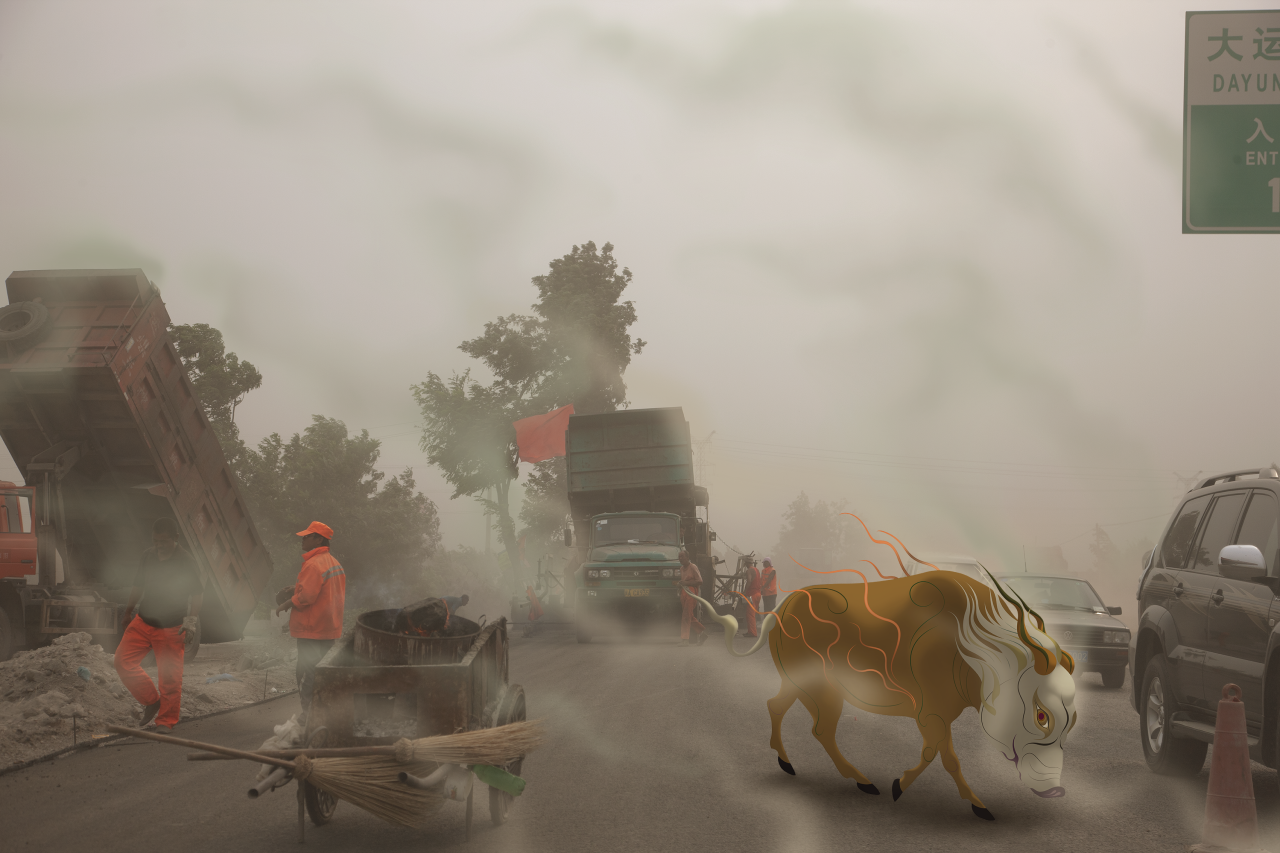 Wen Lin, Grating light box, 120cm×80cm×5cm, 2023
Wen Lin, Grating light box, 120cm×80cm×5cm, 2023
III. Viewing and Communication
CAFA ART INFO: You just mentioned that the “Mythical Beasts from Mountains and Seas” series pays special attention to the public dissemination of the works, so that more people can see them. In the localized project of the “Worldliness” series, what have you done to connect the creations with the audience?
Wang Chuan: My main project in the second half of 2024 is called “Releasing Plan of Mythical Beasts from the Classic of Mountains and Seas”. I have loved drawing animals since I was a child, especially going to the zoo to draw and write. I am deeply impressed by the signs in the zoo with names, photos, and introductions in multiple languages. Later, I went to many zoos abroad and found that there were hand-painted animals of various styles on the signs. This memory inspired me to combine “Mythical Beasts from Mountains and Seas” with the culture of Hunan for a localized presentation.
I specifically chose grating materials for them. In the process of experiment, I found that the unique two-dimensional gradient characteristics of gratings can guide or even determine how spectators view your works to a certain extent. This way of viewing gradually turns into a way of behavior, which I understand as the fun part. The cheap price and availability of gratings allow these works to stay outdoors and become a project that can interact with the public for a long time.
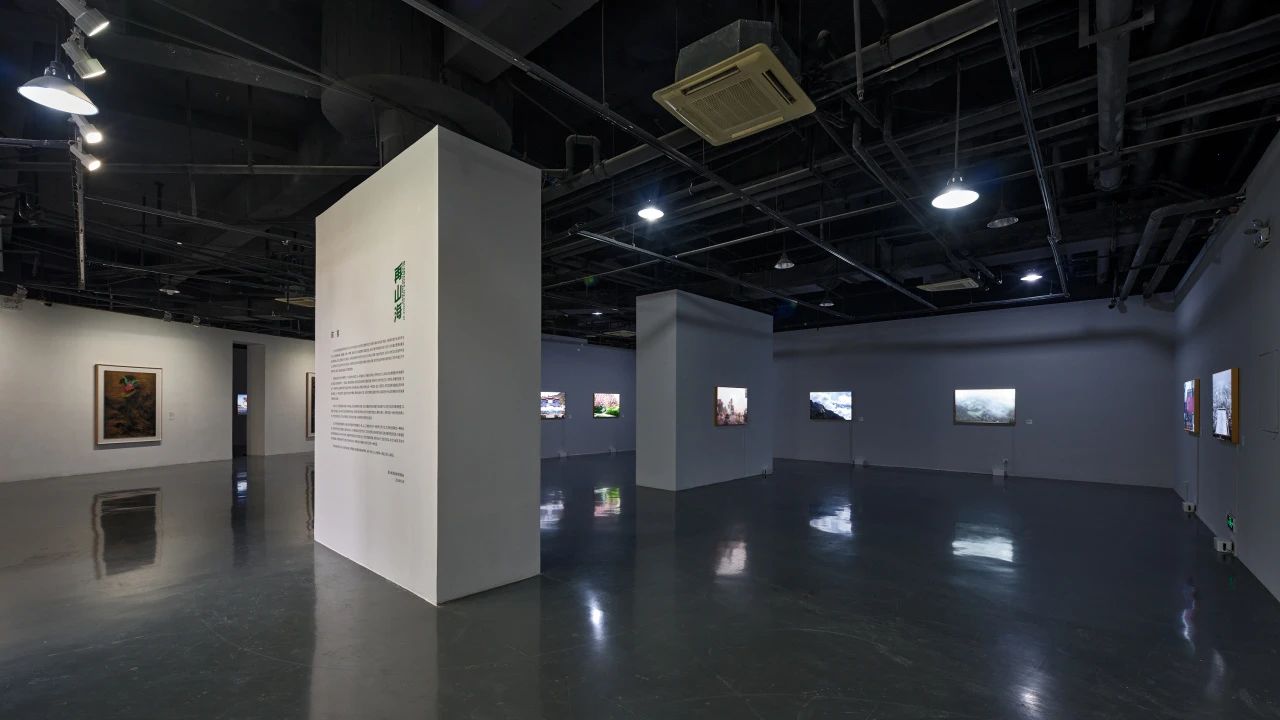
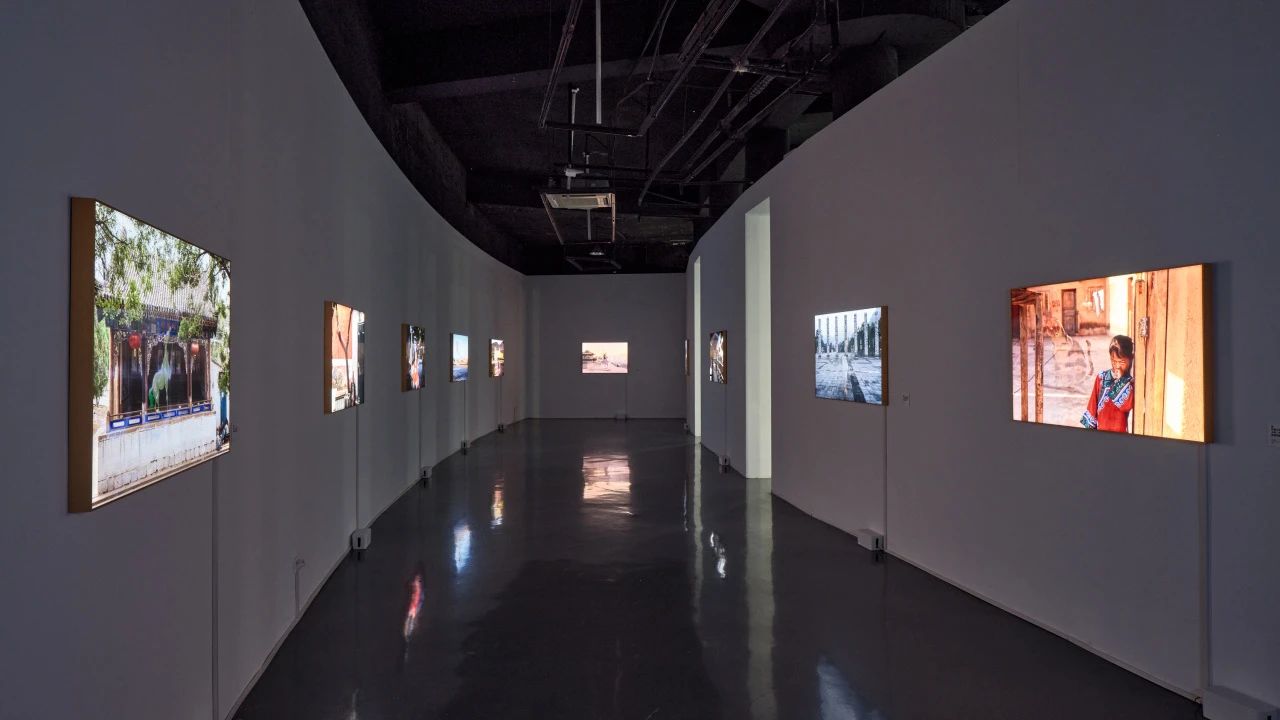 Exhibition View of “Re-creation: The Classic of Mountains and Seas”
Exhibition View of “Re-creation: The Classic of Mountains and Seas”
CAFA ART INFO: Your interest in grating materials seems to continue your interest in some media explorations in the past, such as the precision and blur explored in the Pixel series. What is your creative intention for your preference for blurring?
Wang Chuan: When it came to the Pixel series, I wanted to explain the viewing dominance contained in clarity and blur. Human eyes will focus on the clear part, so whoever is highlighted will be clear, which actually reflects a certain image strategy. But is what people can see clearly necessarily the subject in the absolute sense? On the other hand, the blurred and weakened parts sometimes contain rich spatial meanings. The same is true for the “Mythical Beasts from Mountains and Seas” using gratings. It is difficult for people to see a complete image, and clarity is not in my hands. This is determined by the material and light, which breaks through the public viewing method allowed by the traditional two-dimensional way.
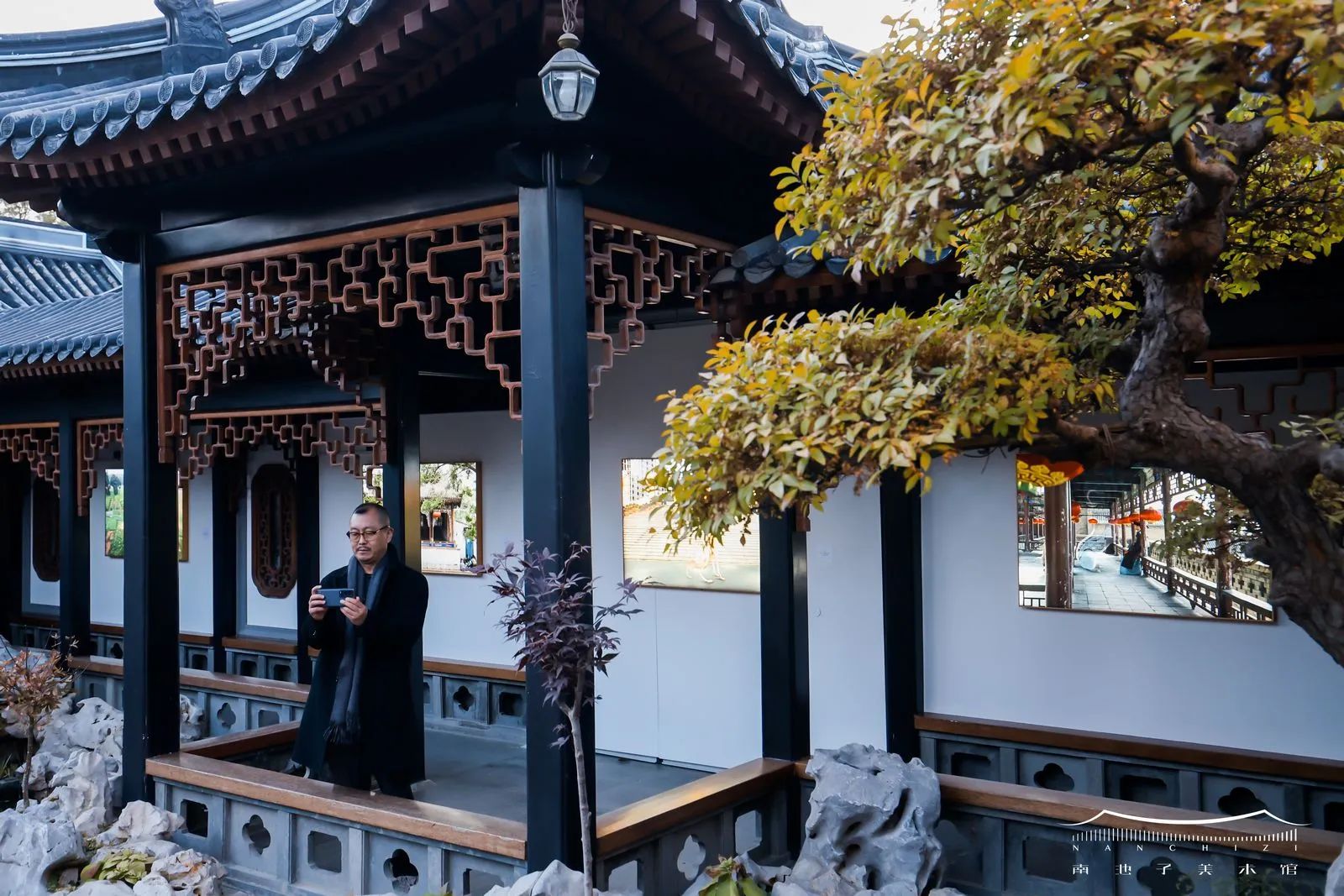
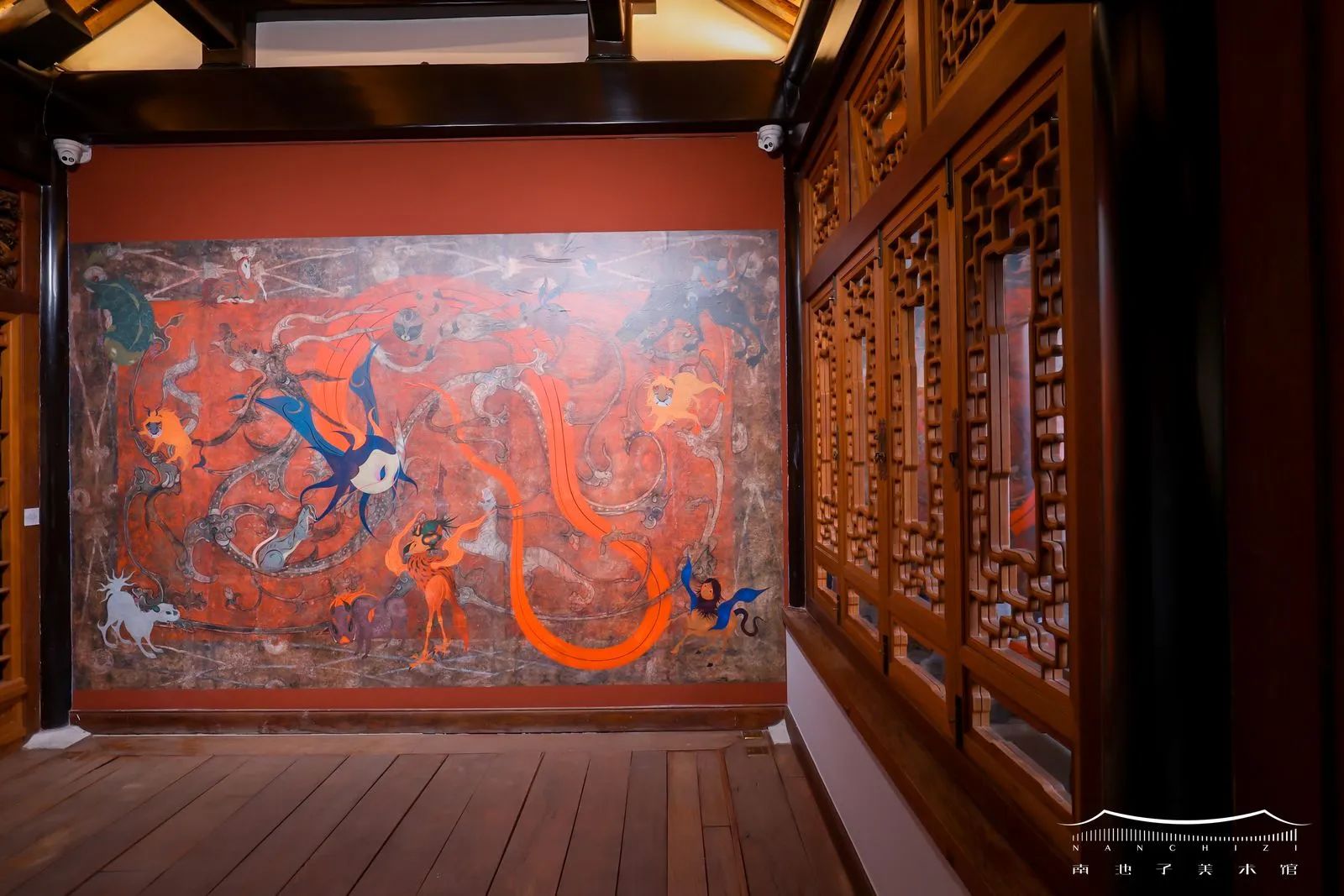
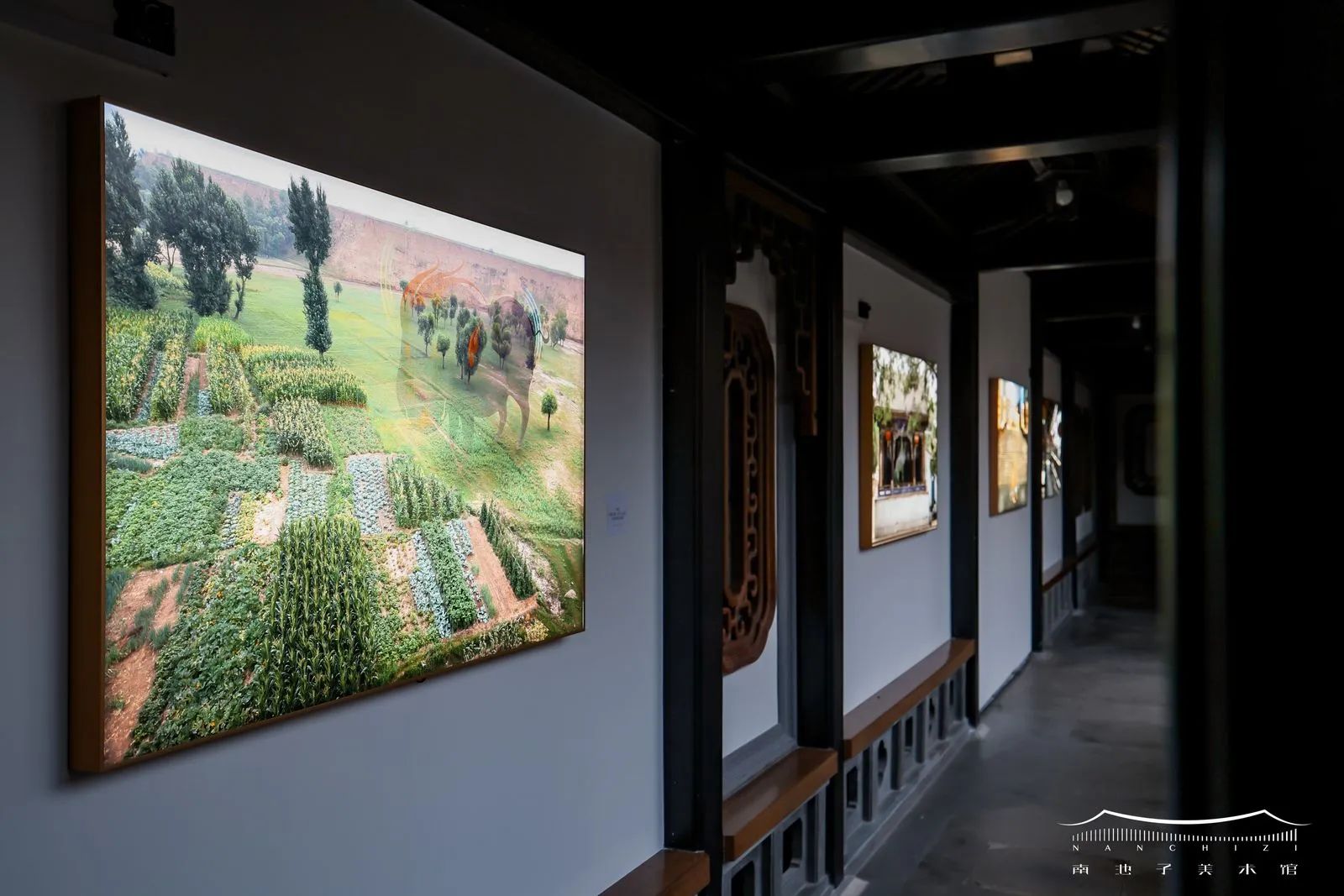 Exhibition View of “Mythical Beasts from Mountains and Seas” at Nanchizi Art Museum
Exhibition View of “Mythical Beasts from Mountains and Seas” at Nanchizi Art Museum
CAFA ART INFO: Gratings also emphasize dynamic viewing, which seems to presuppose a spectator’s viewing perspective. Why is viewing so important to you in any sense?
Wang Chuan: After I used gratings to reproduce the Zunyi Conference in “The Grid of History: Zunyi in 1935”, the results recorded the audience’s viewing state on site seemed to be beyond imagination. In the exhibition of the “Mosaic” series and clear images displayed together in 2013, there was also similar viewing feedback. The audience did not stop to watch like in the Louvre, but kept walking, and viewing became a kind of search. This is the way of viewing inspired by the current artistic means. After that, I have taken the way of viewing into the consideration of creation.
I think artists should pay more attention to viewing, because what we are doing is expression, communication and dissemination. It is impossible not to care about the results and efficiency of expression. Even from a strategic point of view, we must care about the results of viewing. What’s more important is that we cannot pretend that we do not care at all.
Text (CN) by Mengxi, trans. and ed. by Sue/CAFA ART INFO.
Image Courtesy of the Artist.
About the Exhibition
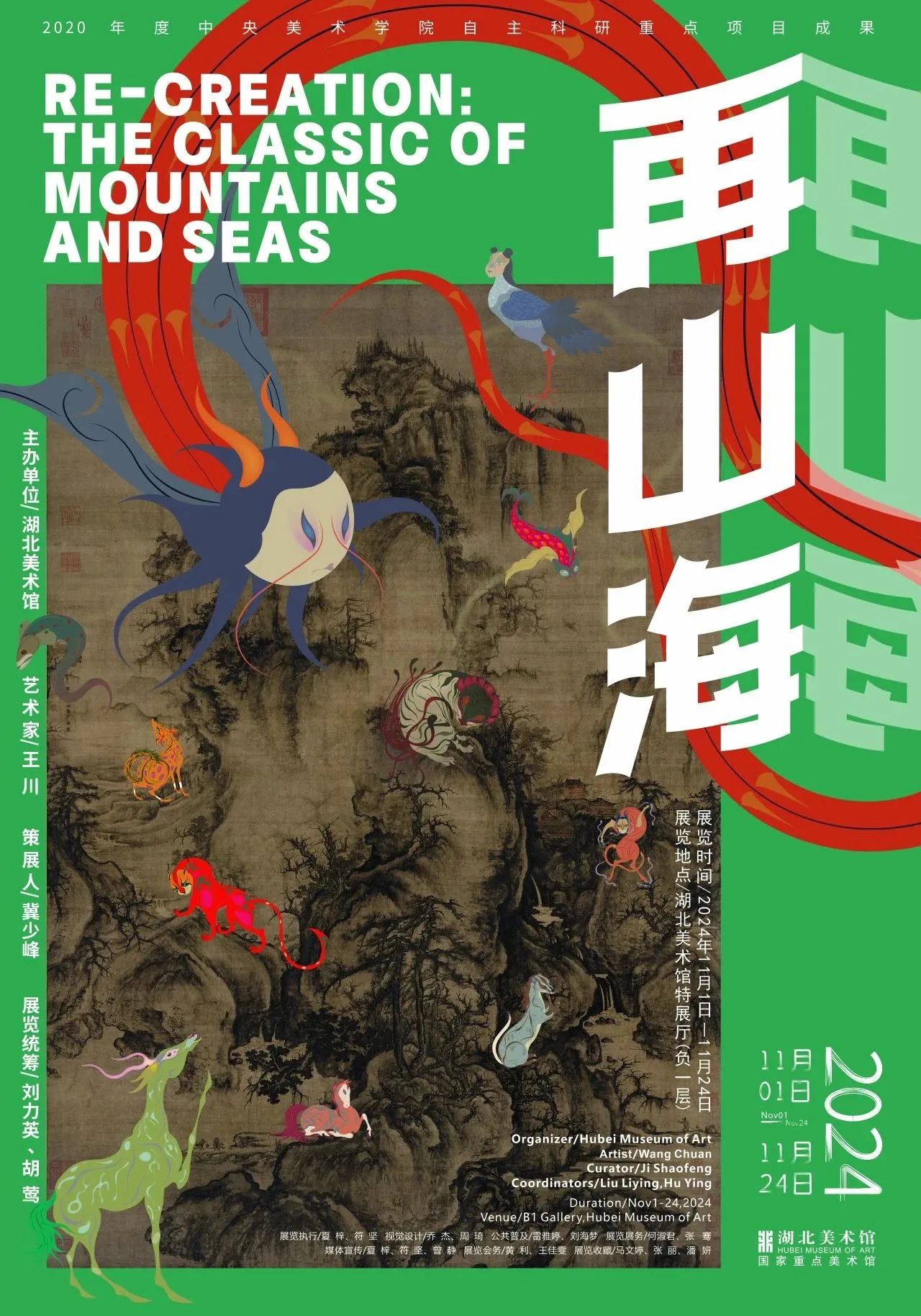 “Re-creation: The Classic of Mountains and Seas”
“Re-creation: The Classic of Mountains and Seas”
Dates: November 1 November 24, 2024
Venue: Hubei Museum of Art



























